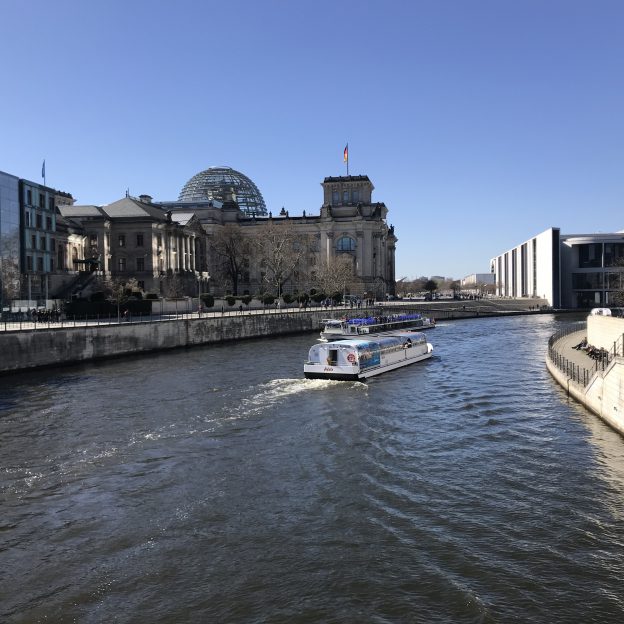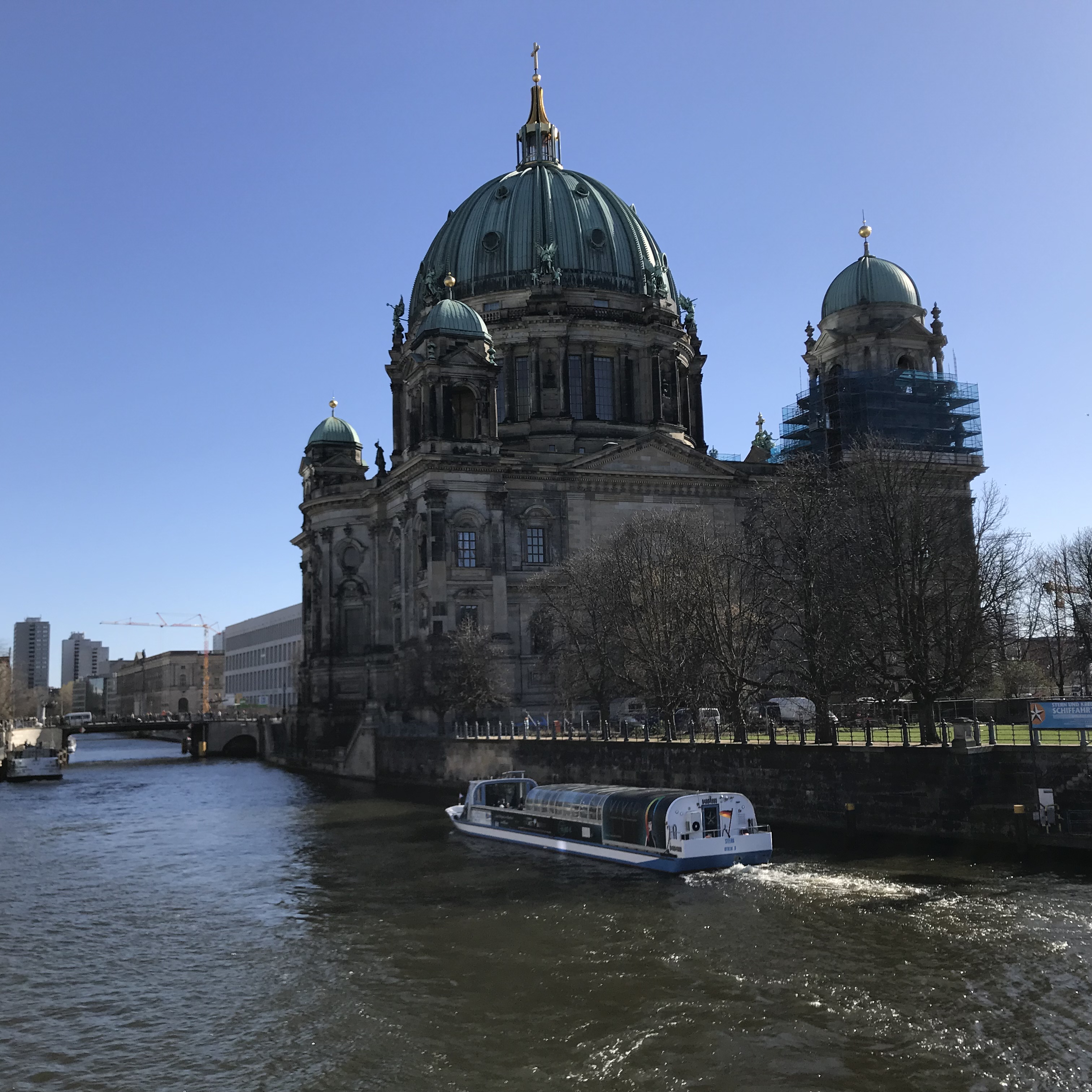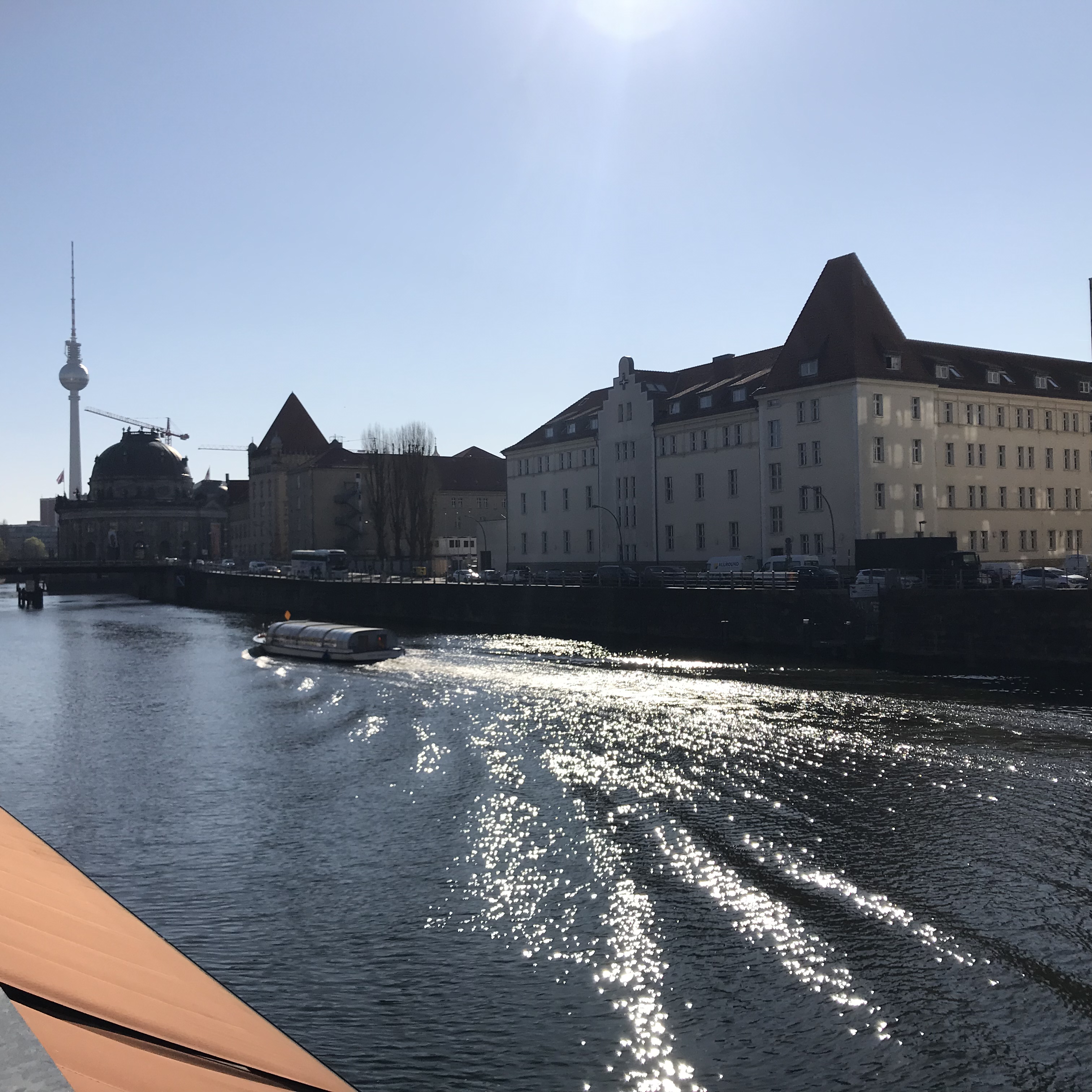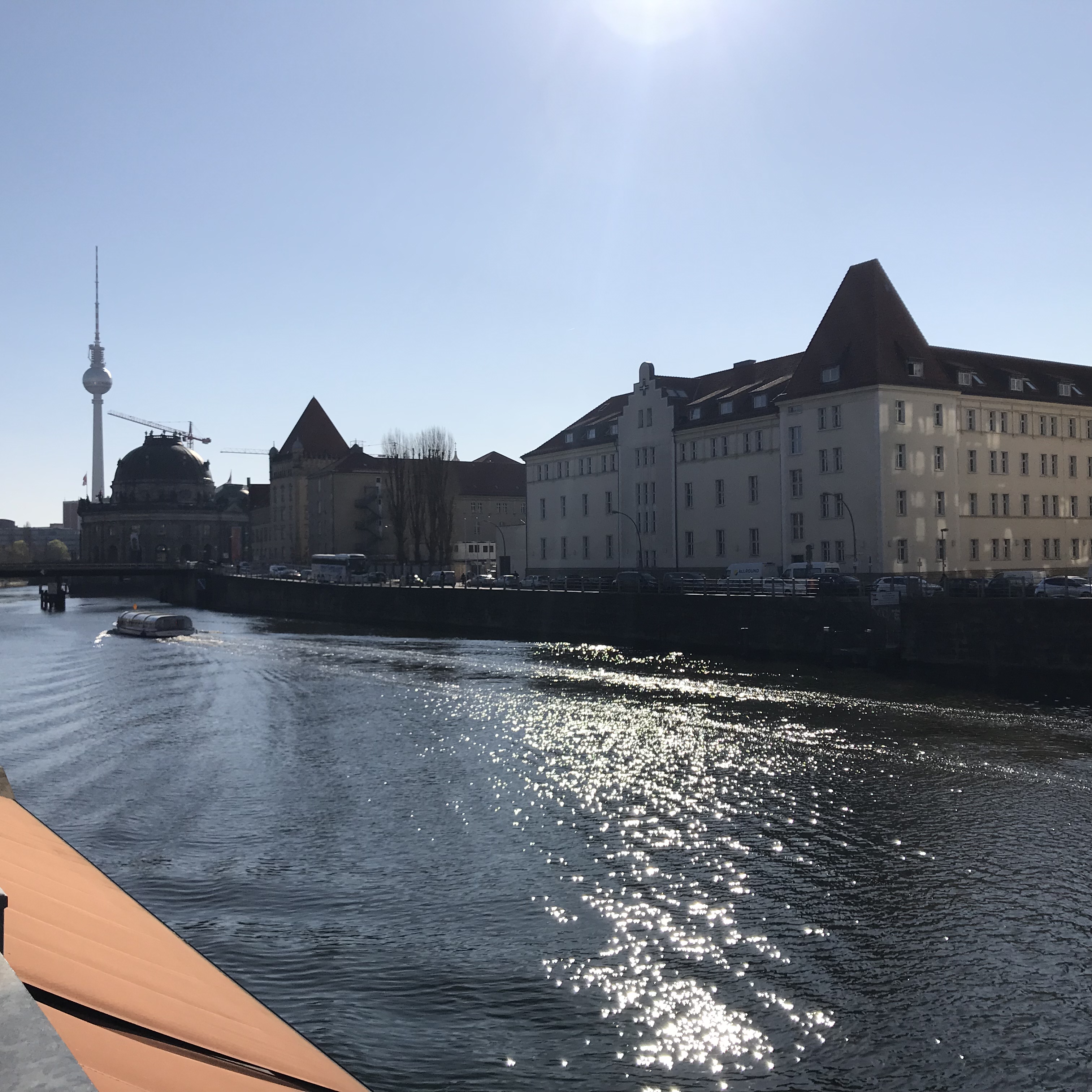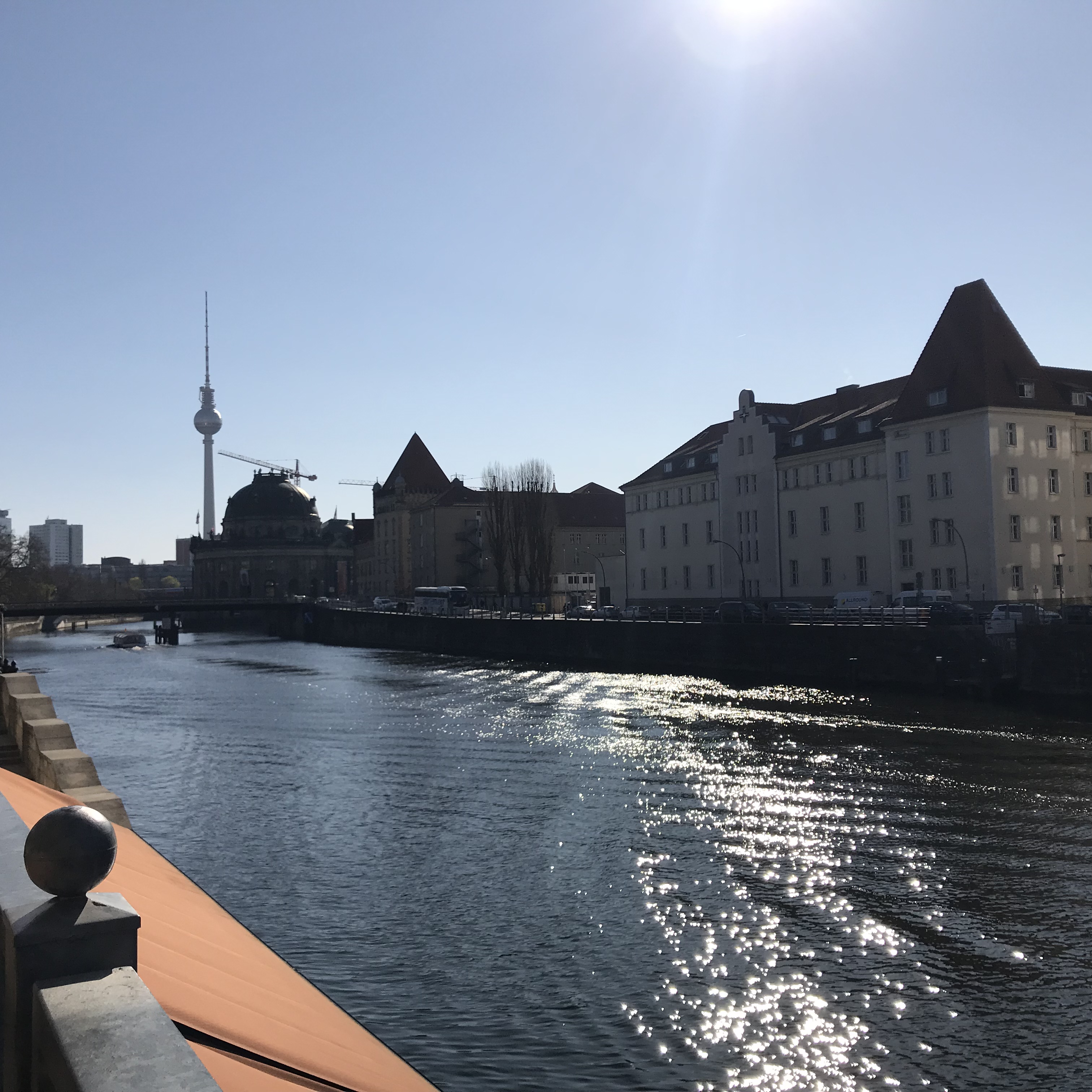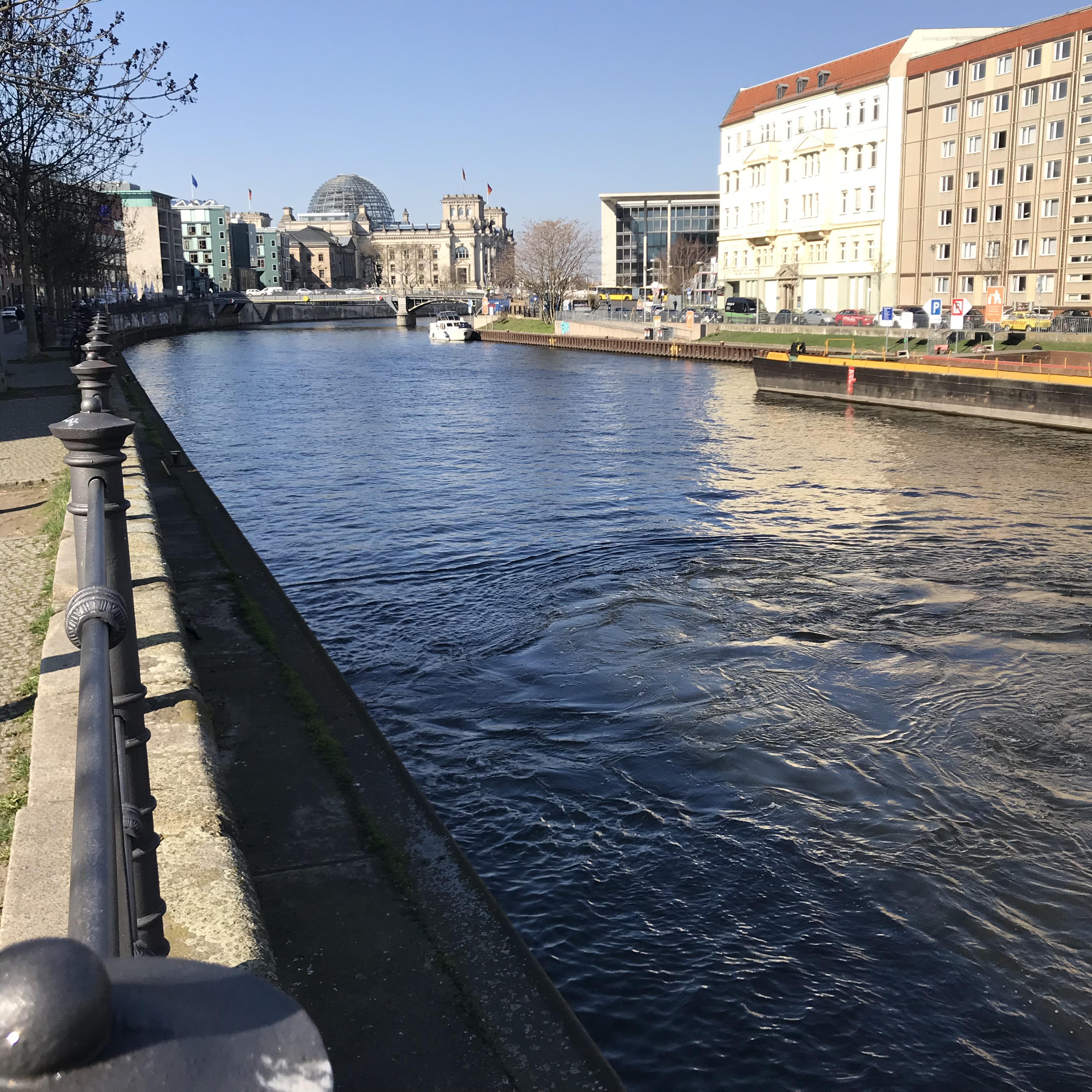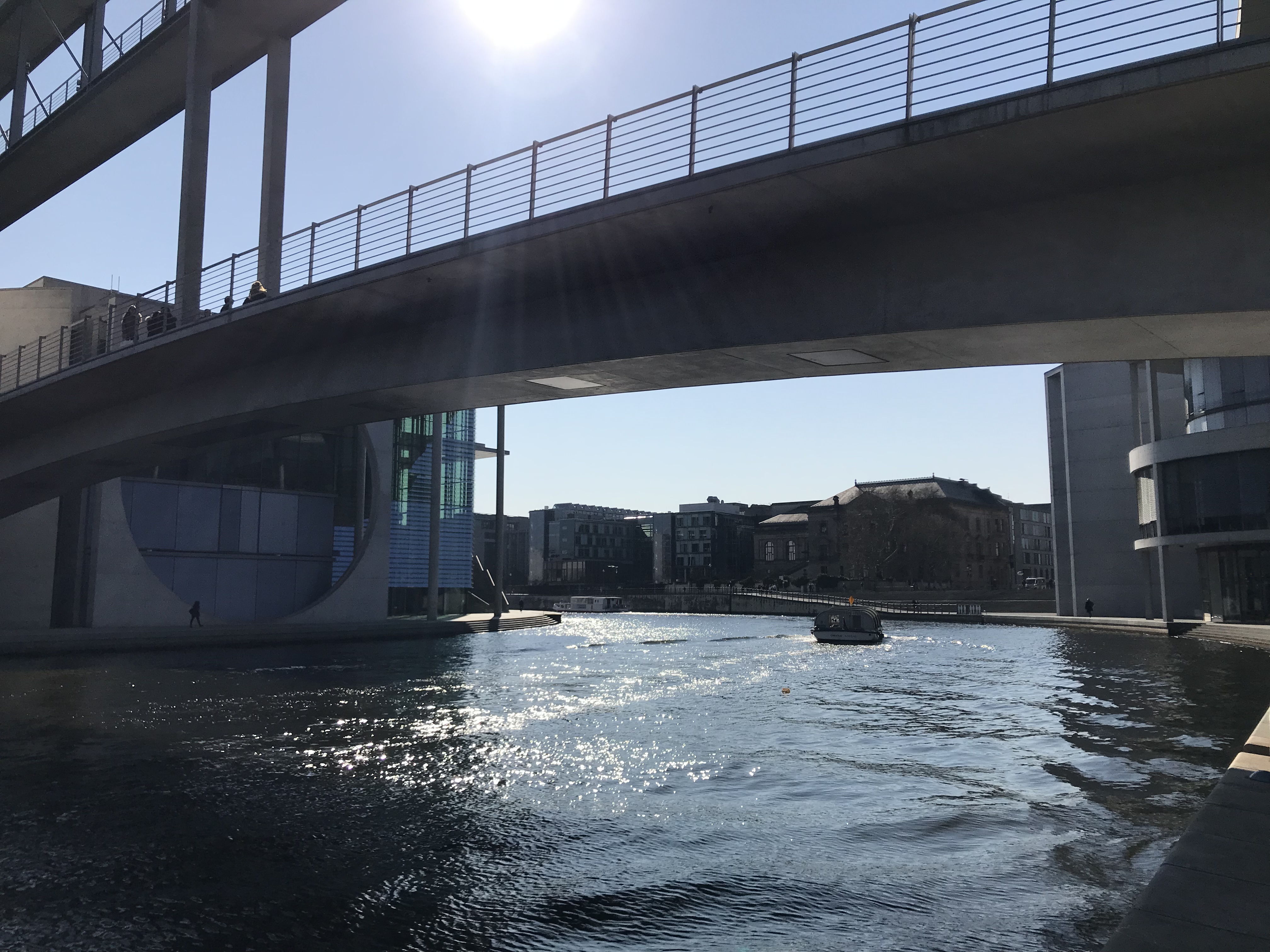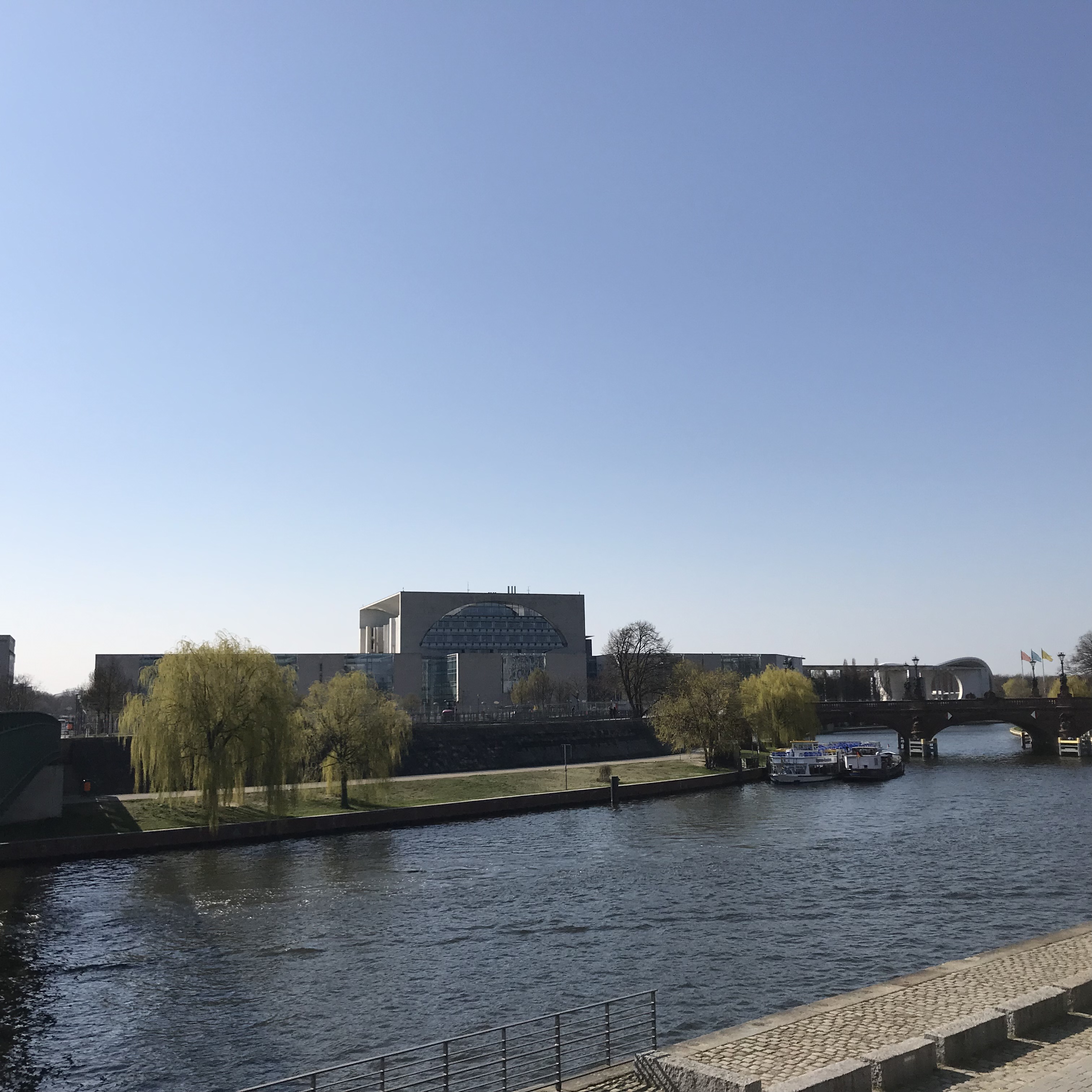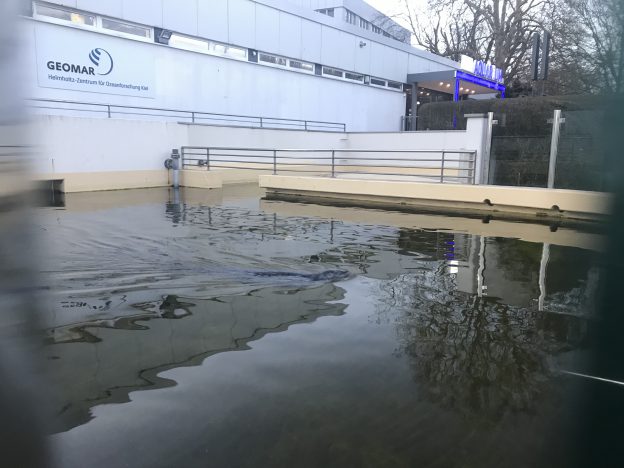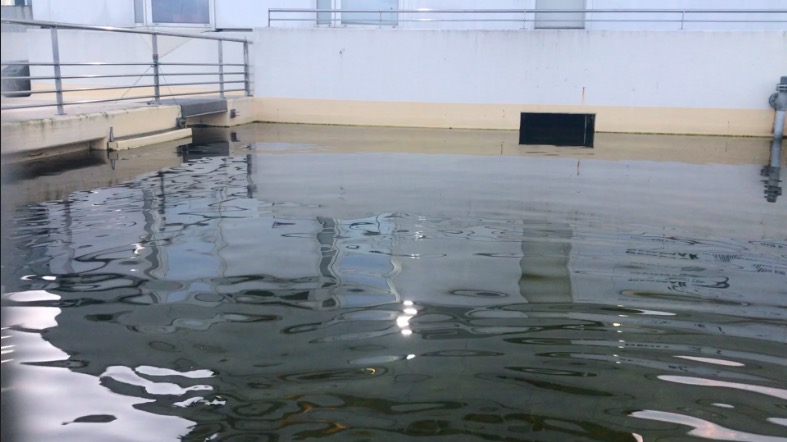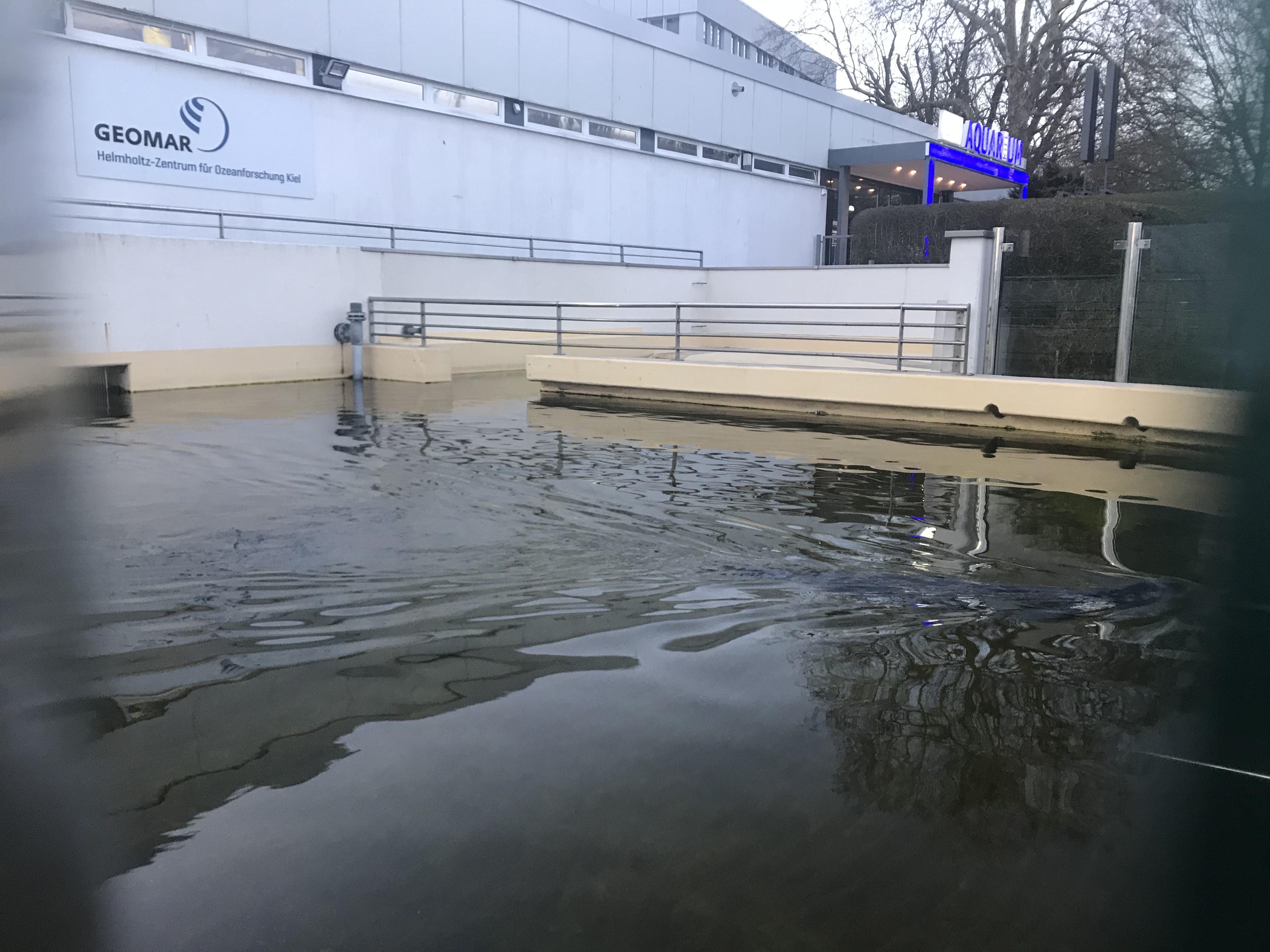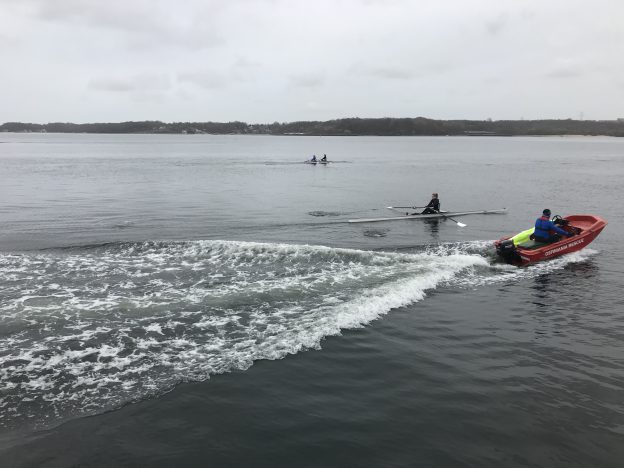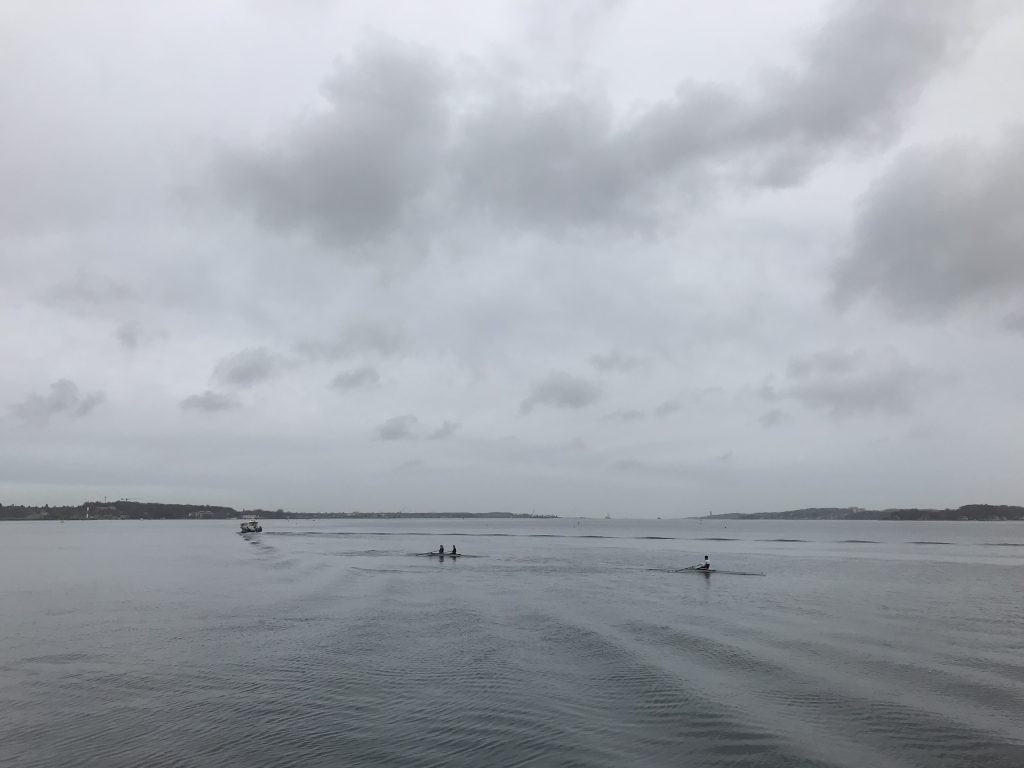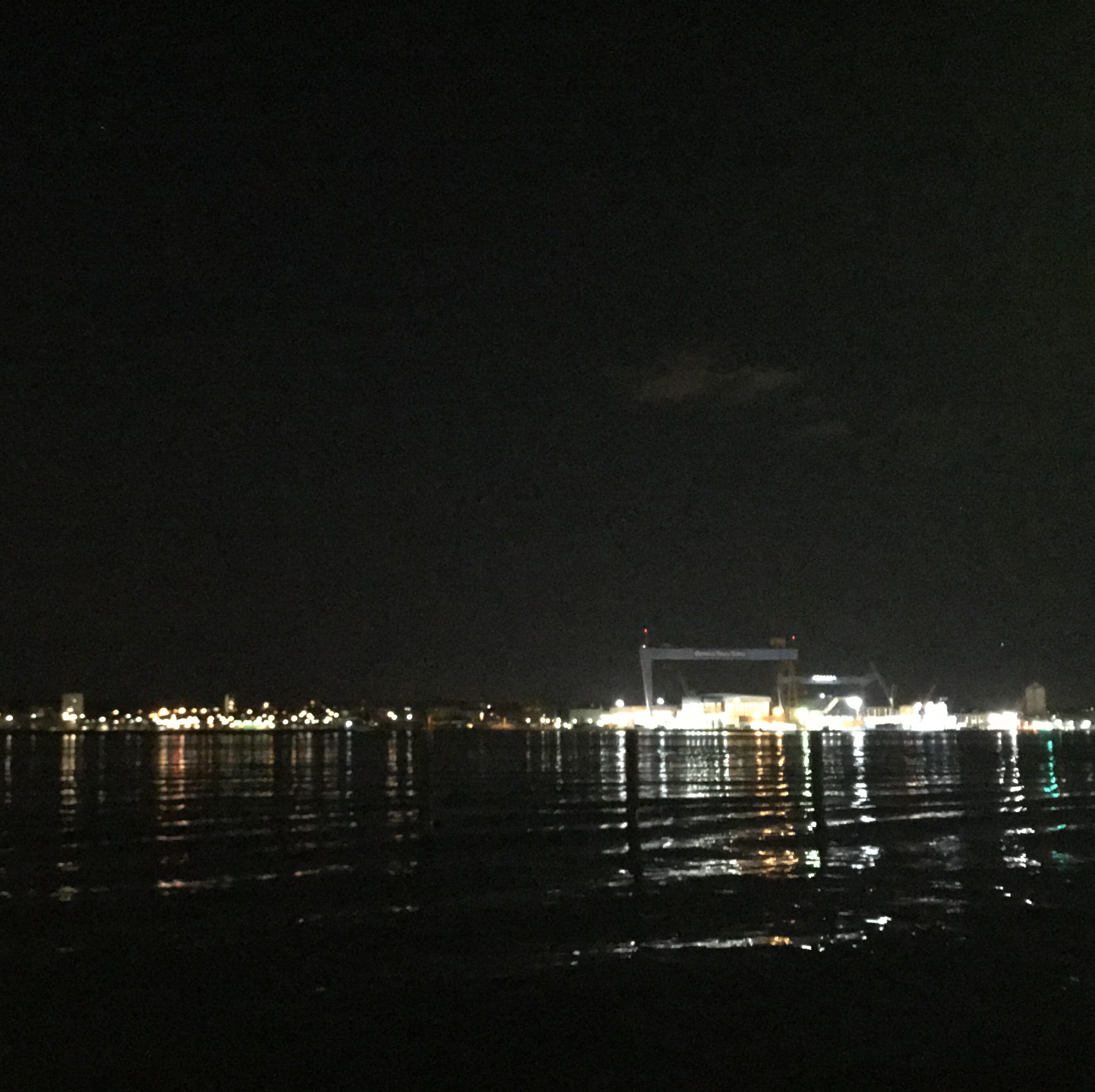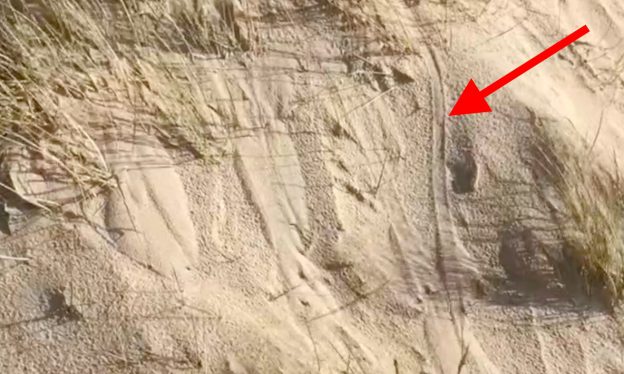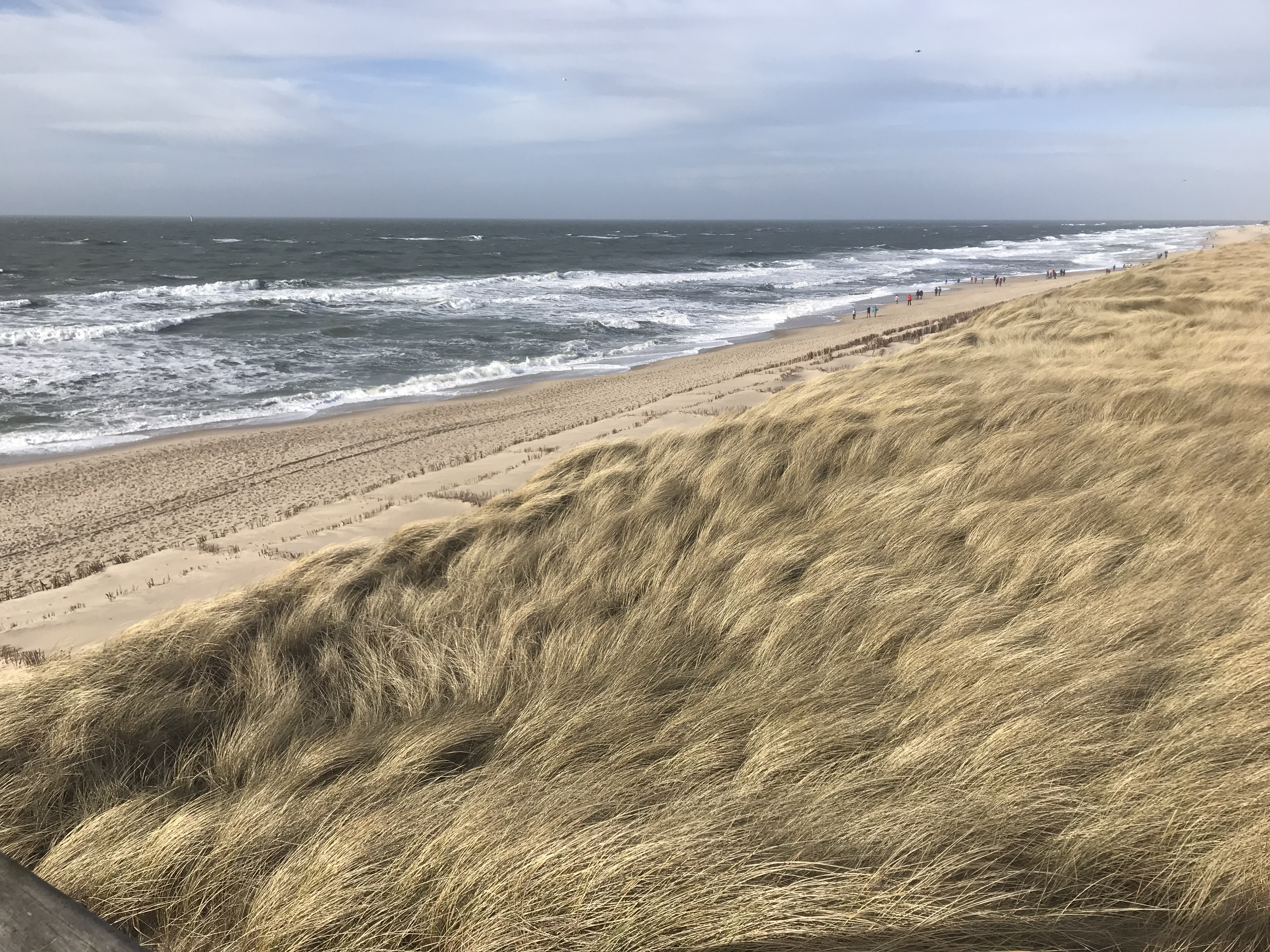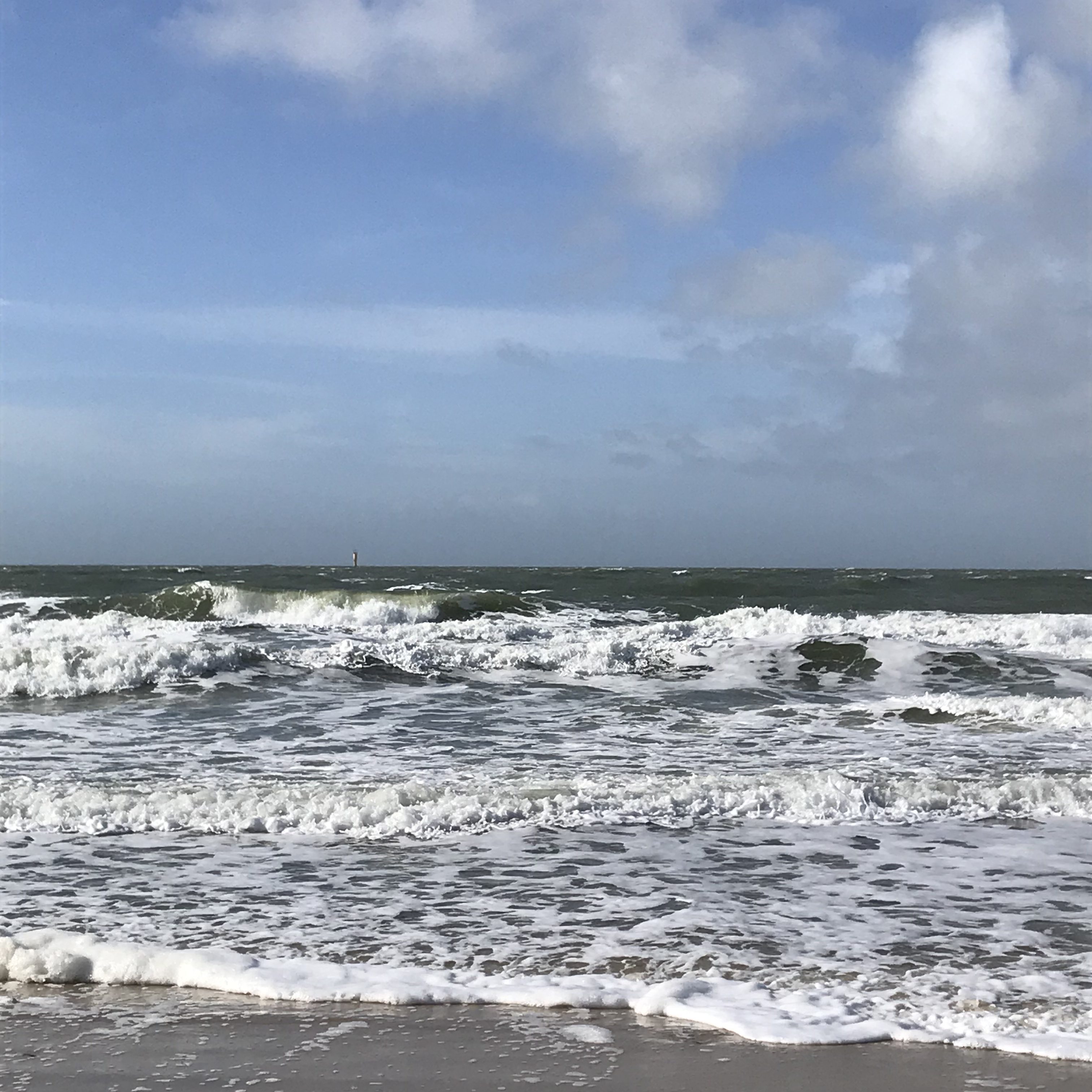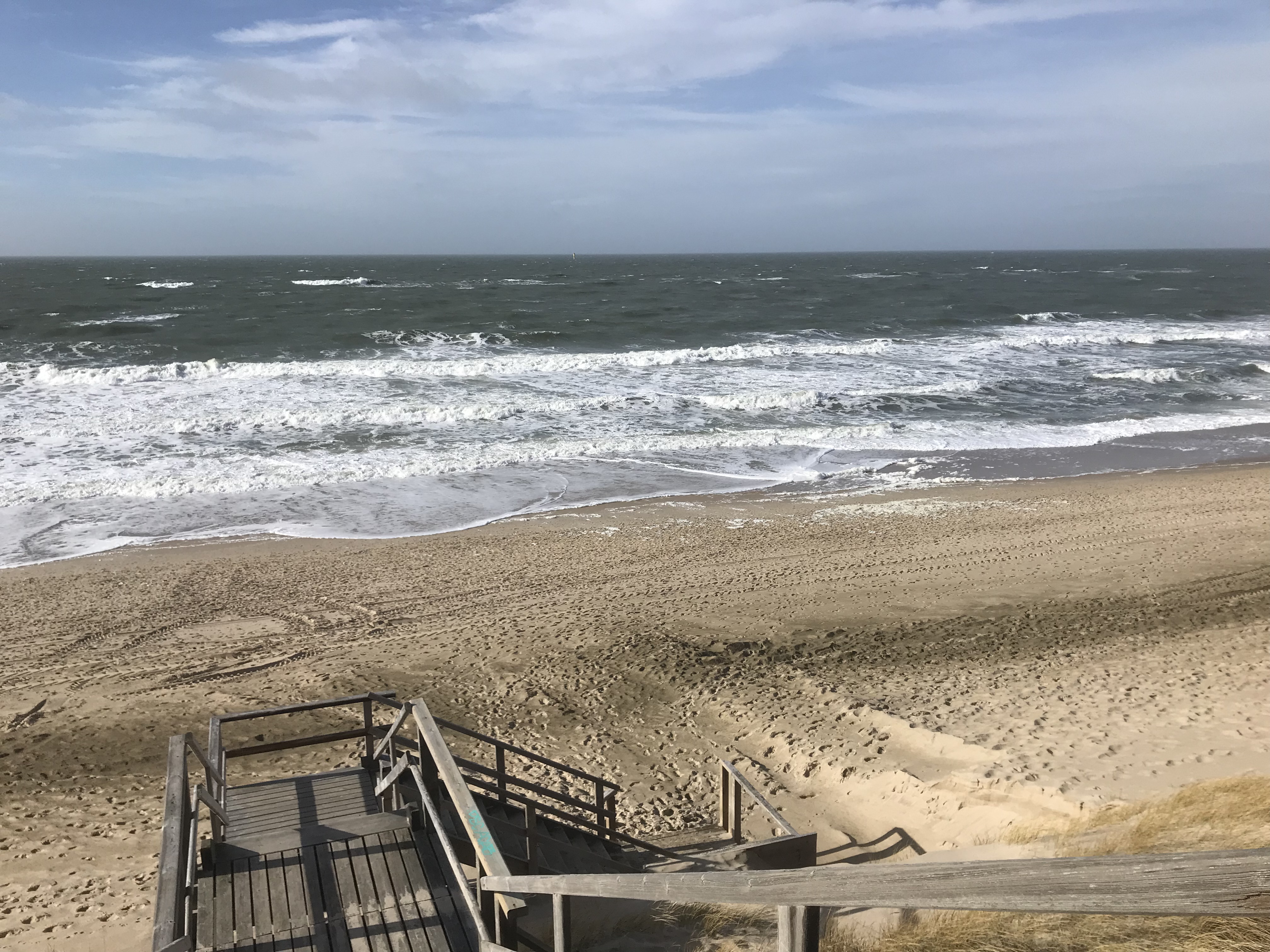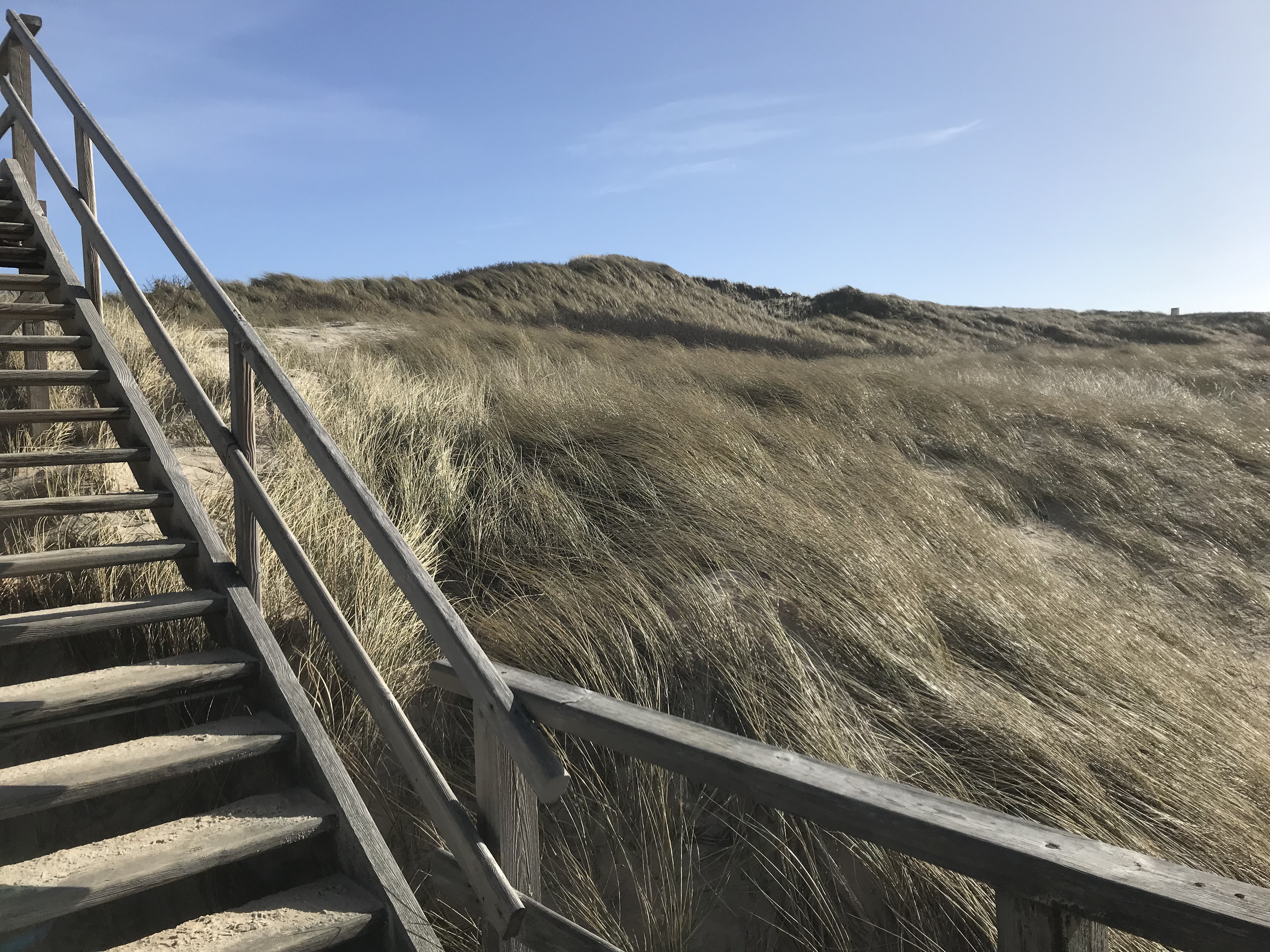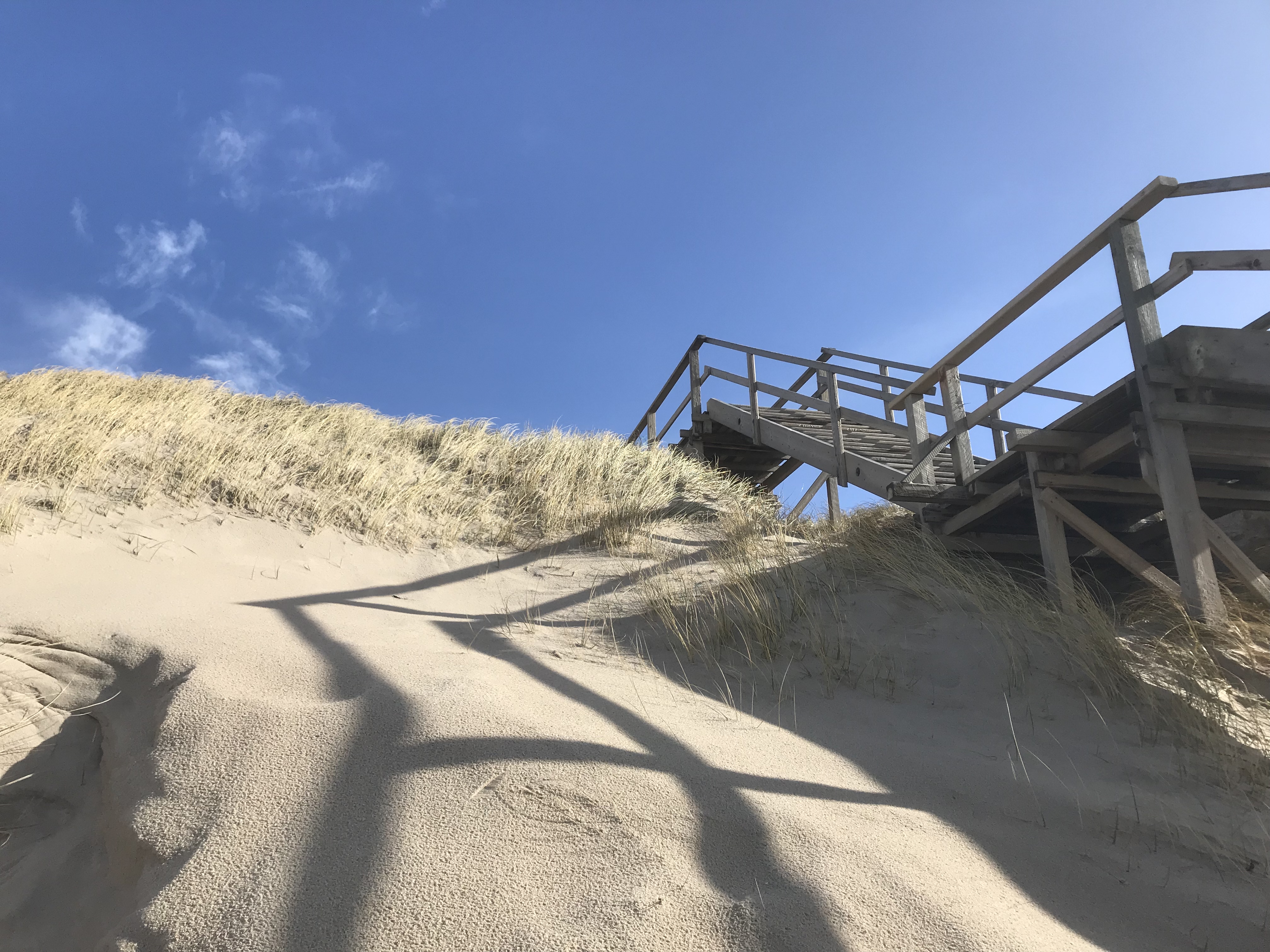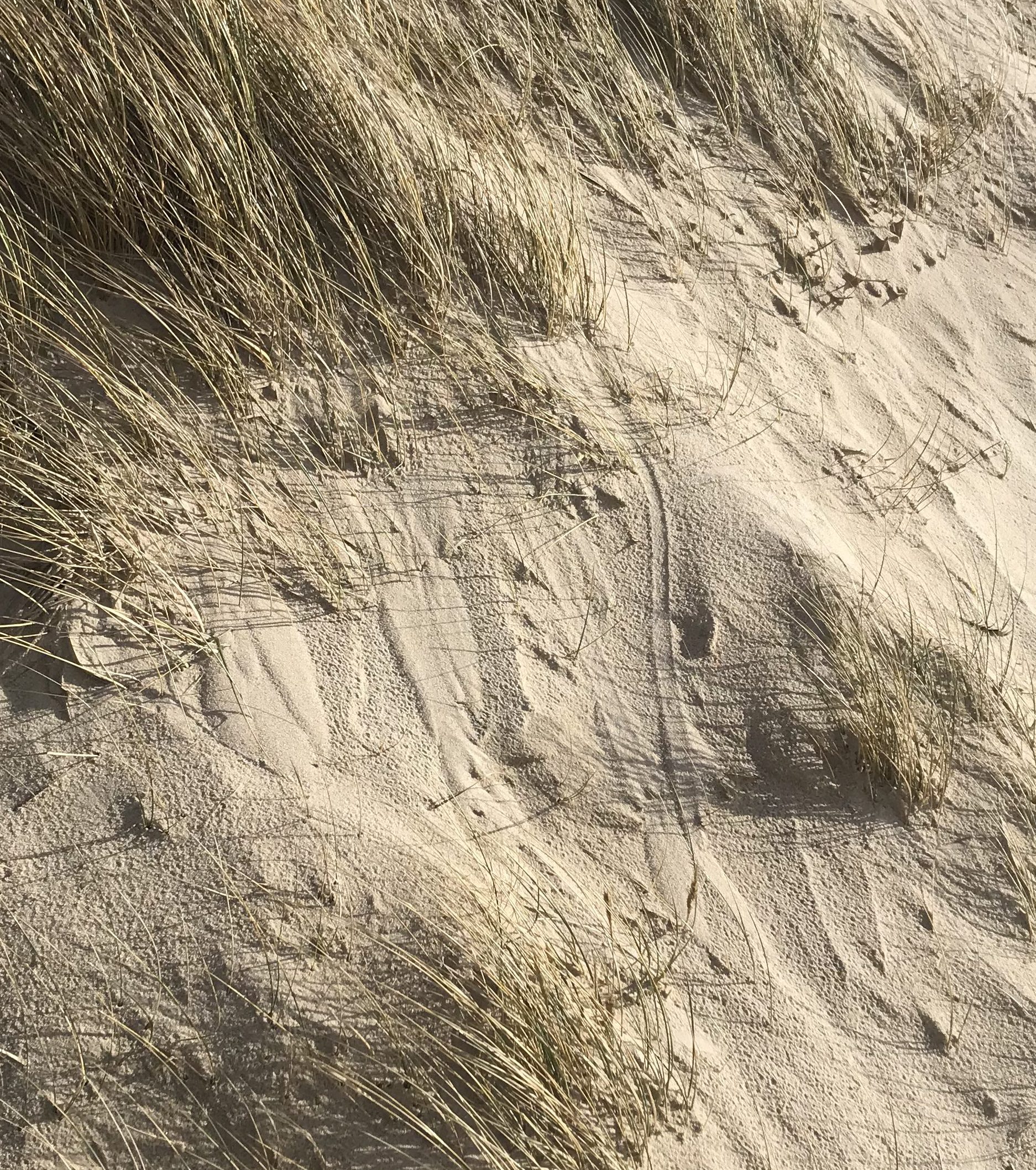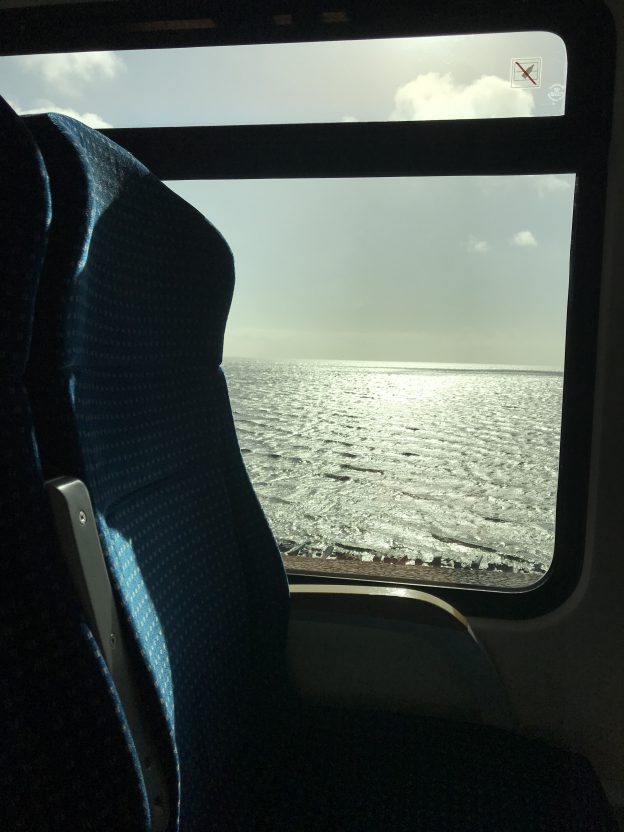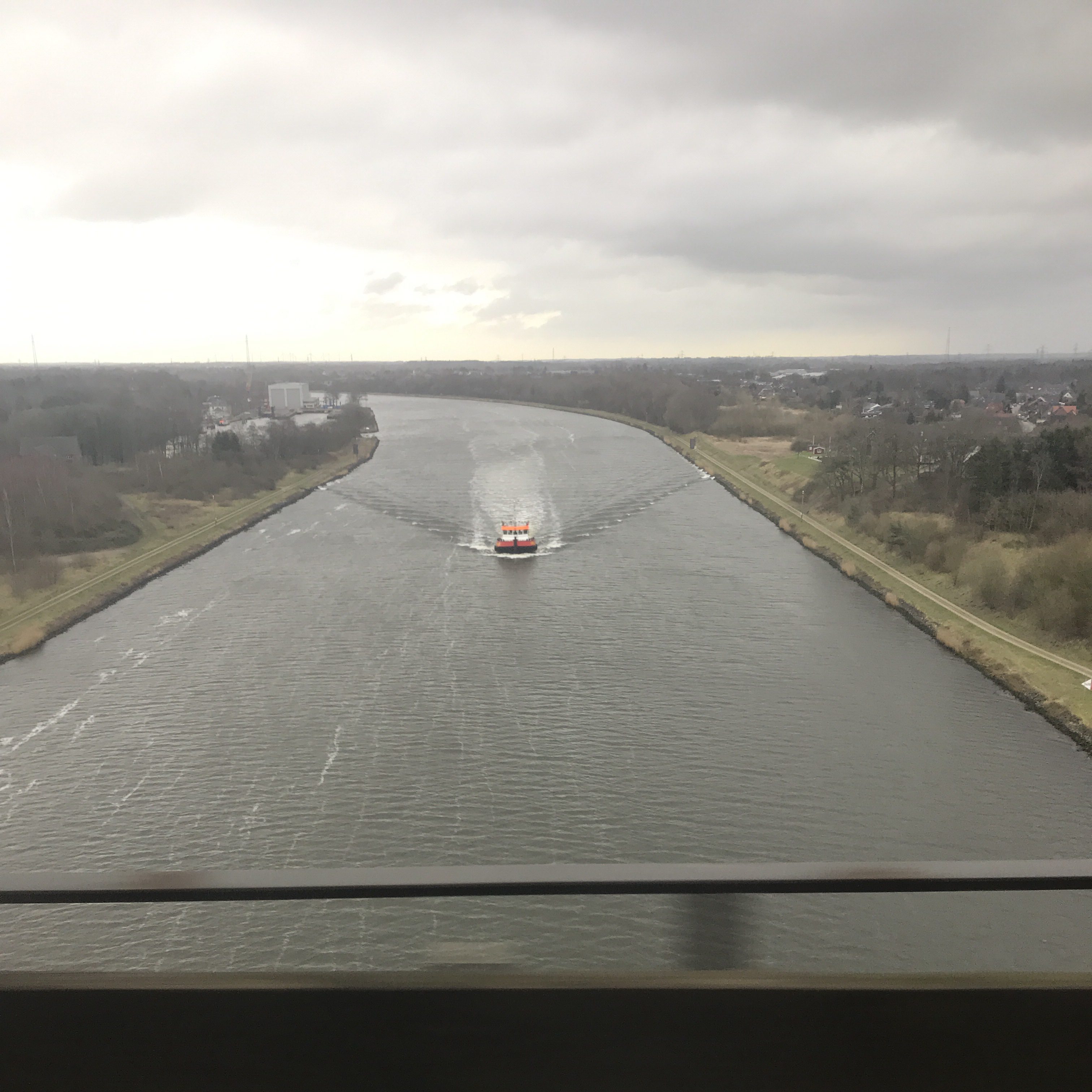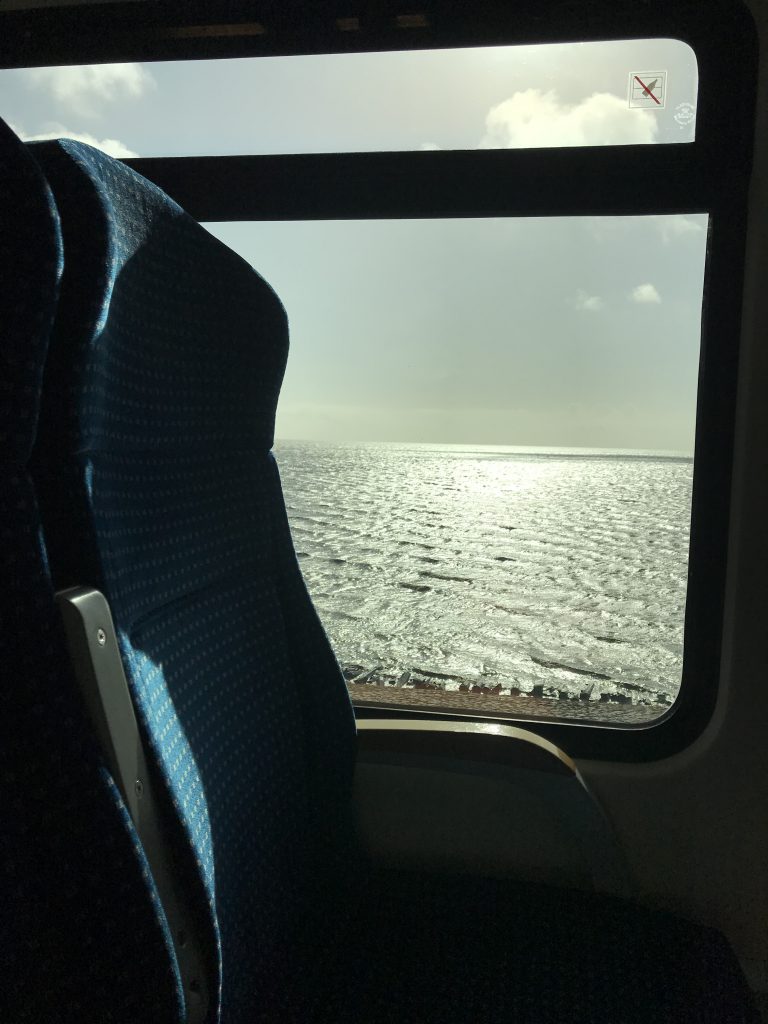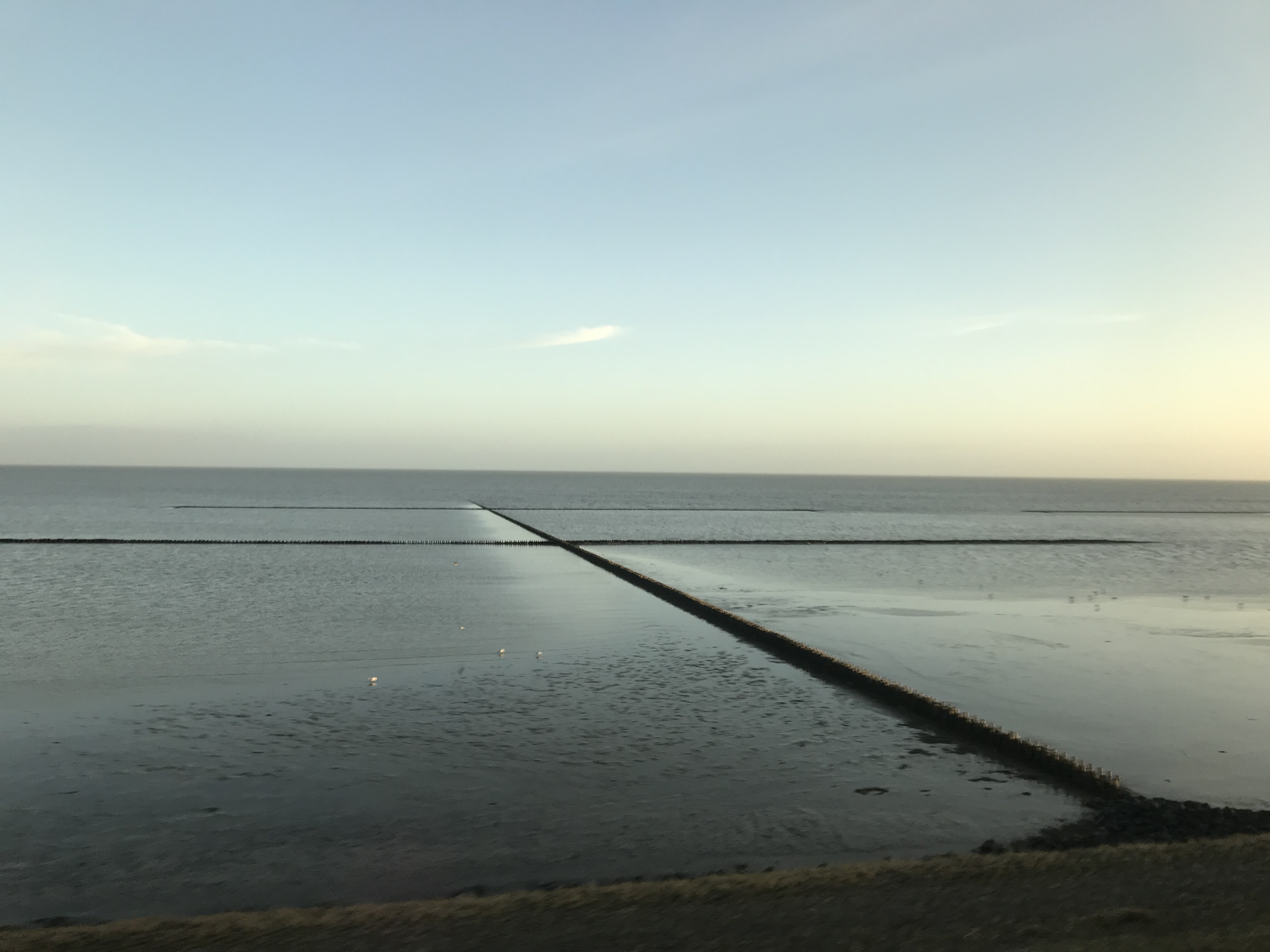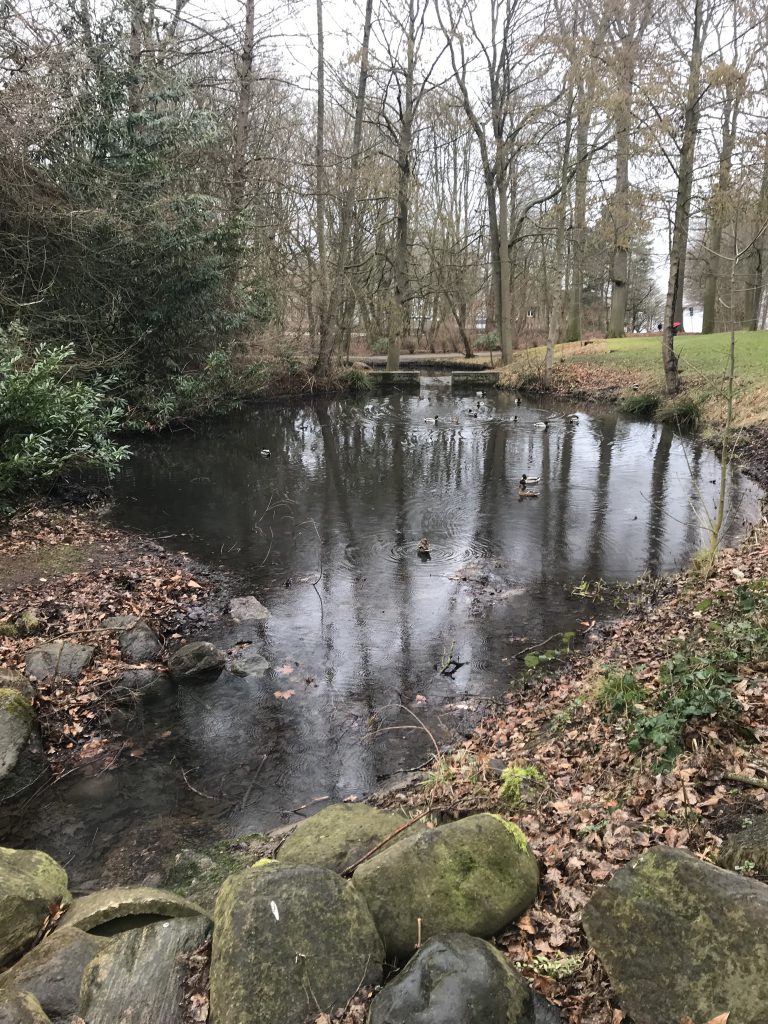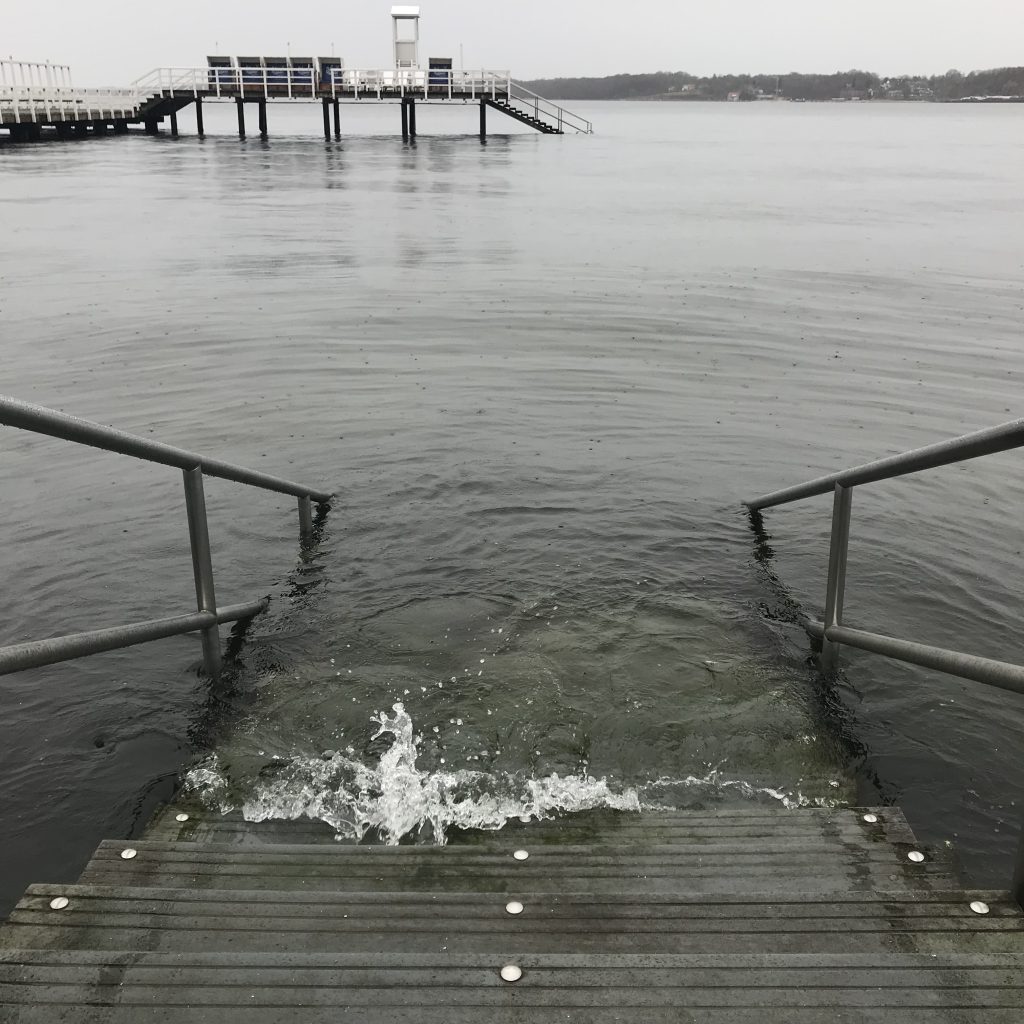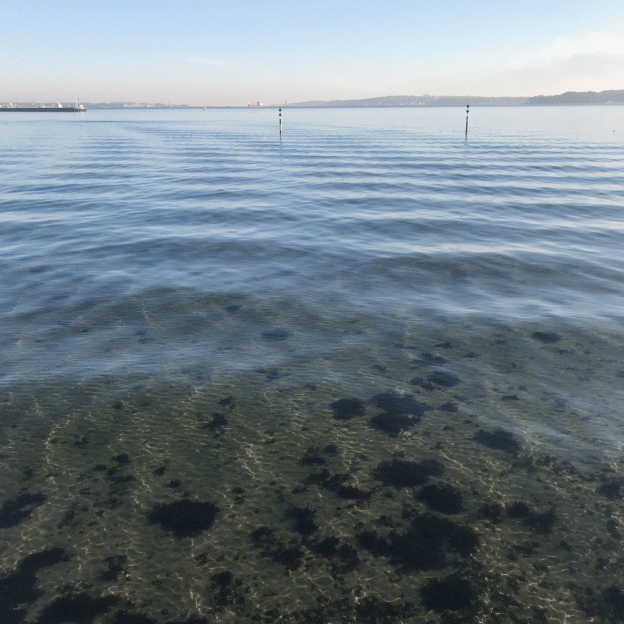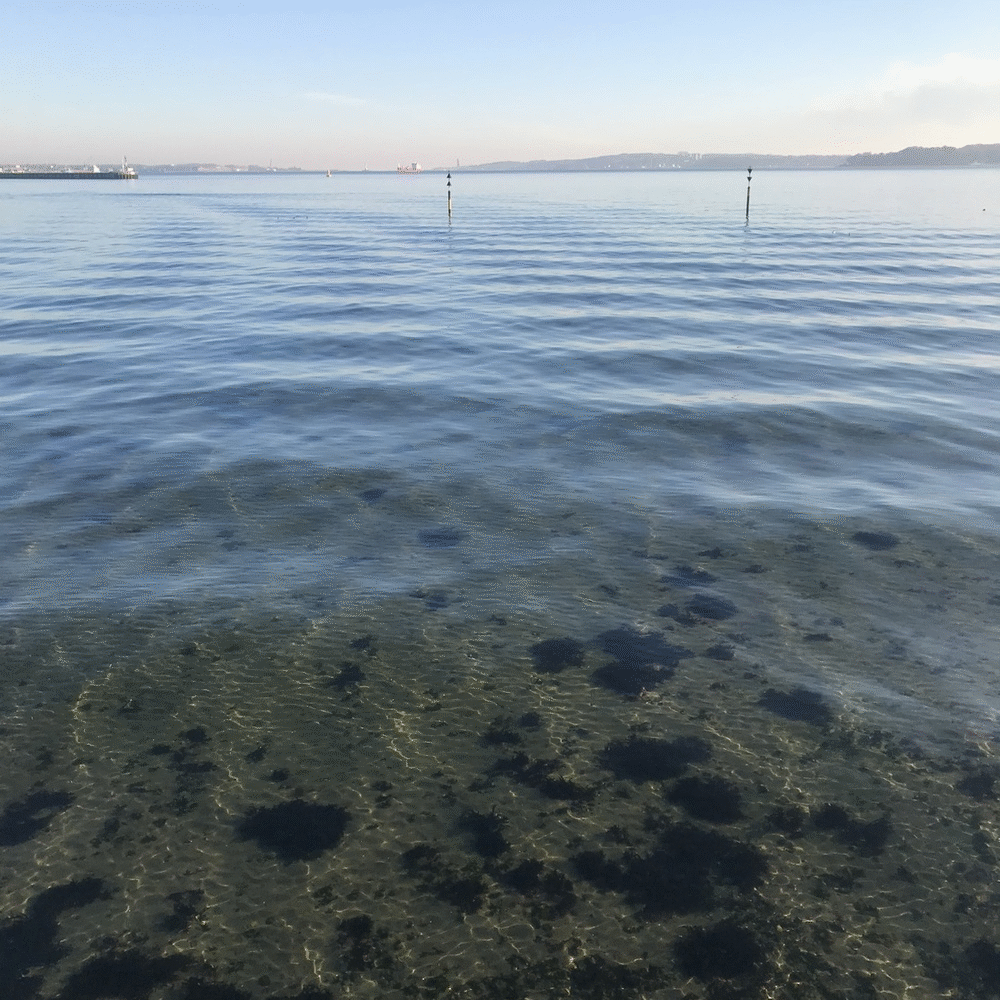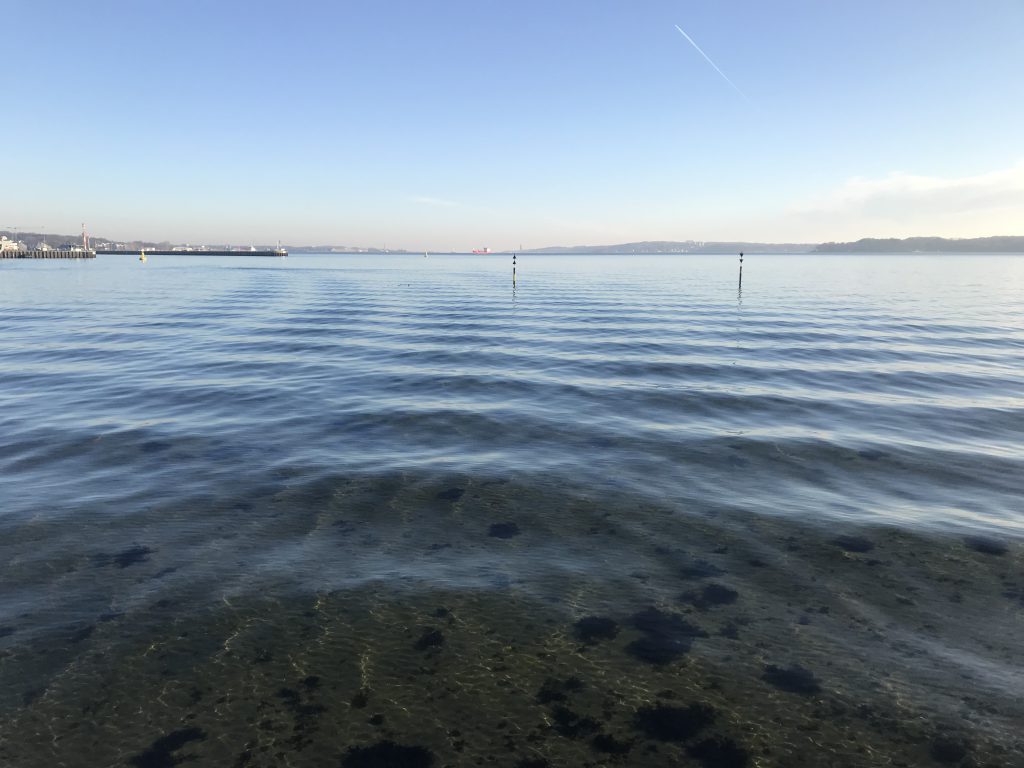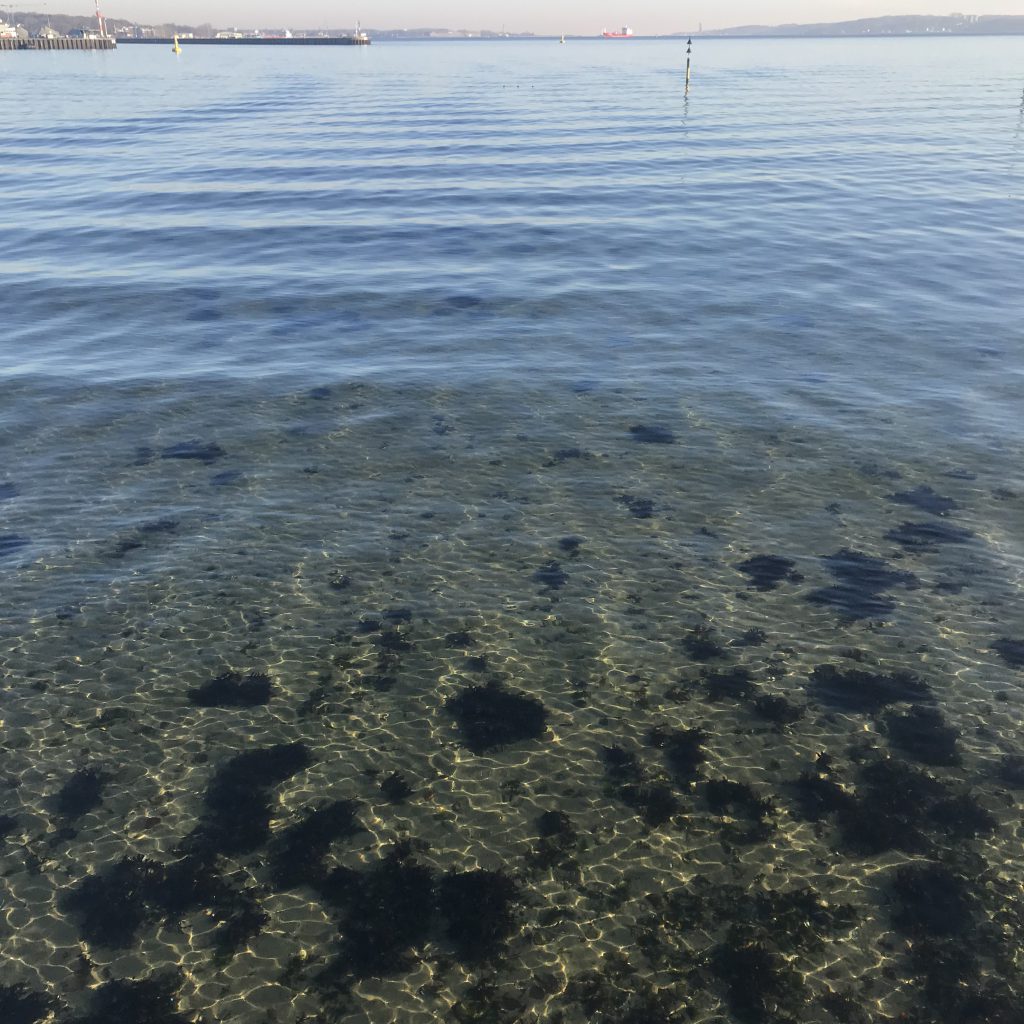Here is a puzzle for you.
Walking along a beach, first, the waves looked like this: One wave breaking at a time.
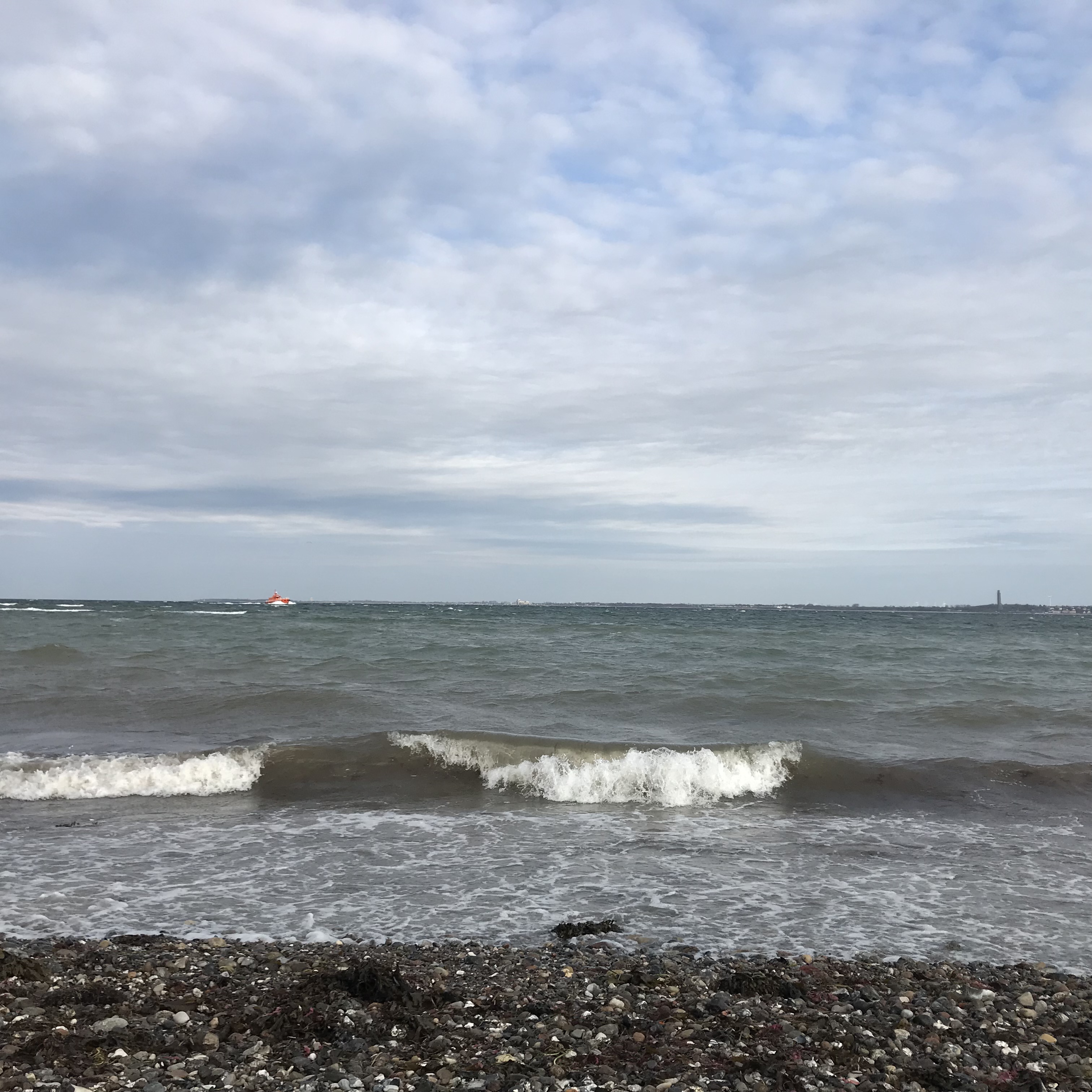
That’s the situation you also see in the foreground of the picture below, while in the background, a little further down the beach, something else starts happening.
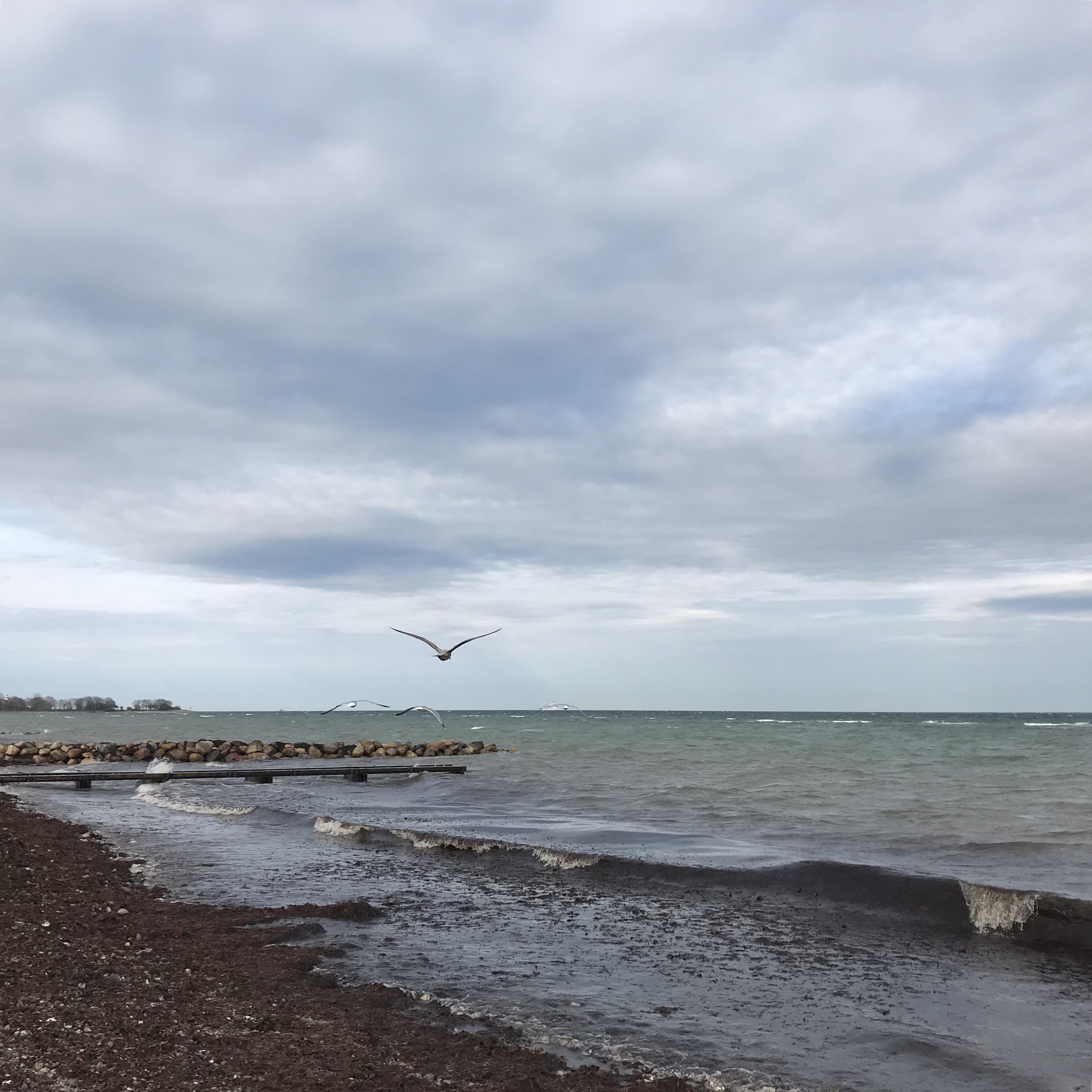
If we look closely at that situation (shown in the picture below), there are several waves breaking at the same time, one behind the other.
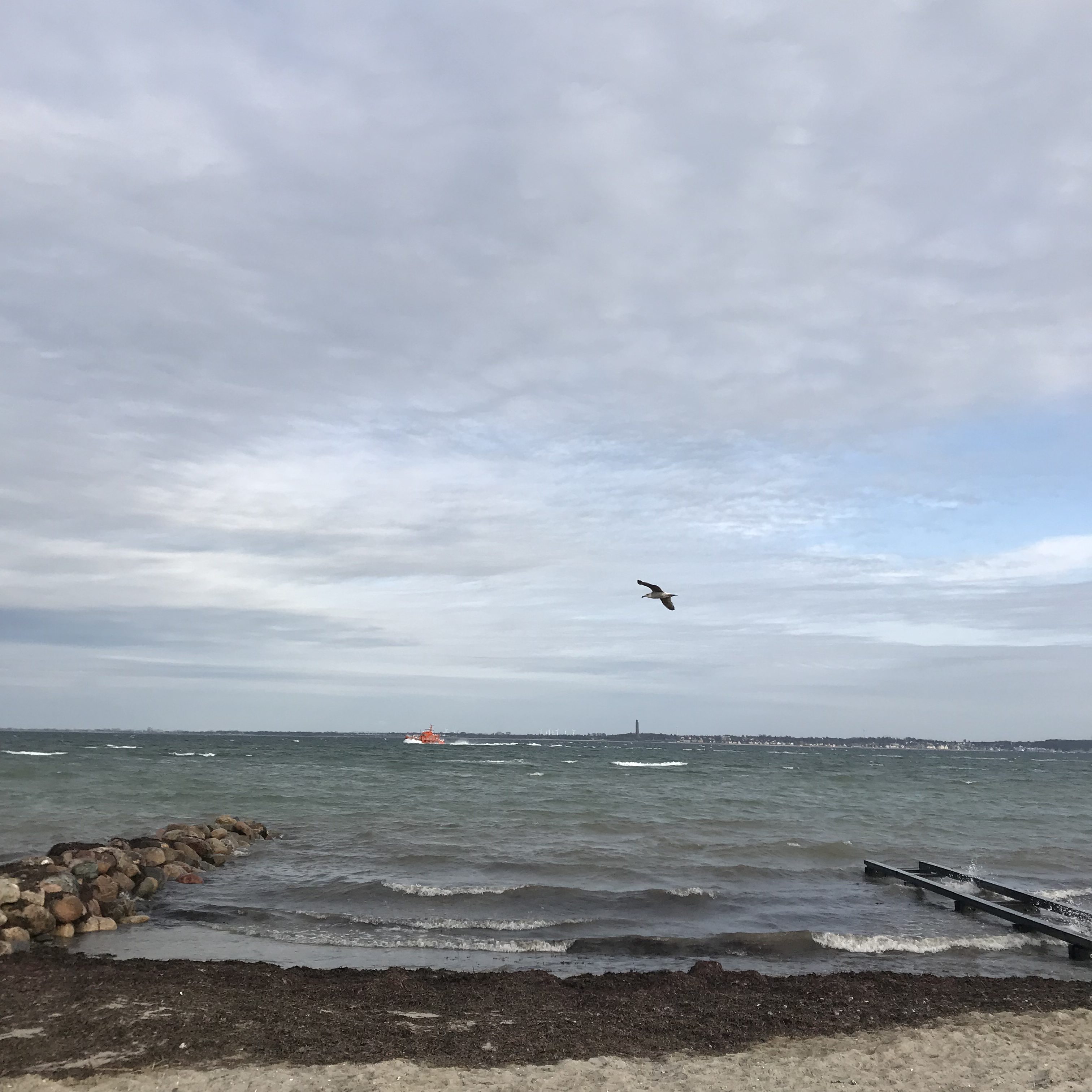
And it isn’t just coincidence, it keeps happening throughout hundreds of pictures I took that windy Sunday. Why is that?
I think (and this theory would be easy enough to test if the water was warmer or if I wasn’t such a sissy) that the slope of the beach is just different on either side of this little jetty or whatever it is. The shallower the slope, the earlier waves of the same wavelength can “feel” the sea floor, or the shorter waves have to be to “feel” the sea floor at the same distance from the water line.
So I think the slope on the left of the jetty is shallower than on the right, making the incoming wave field that is the same on either side (I’m assuming, but give me a good reason for why it shouldn’t be?) behave differently.
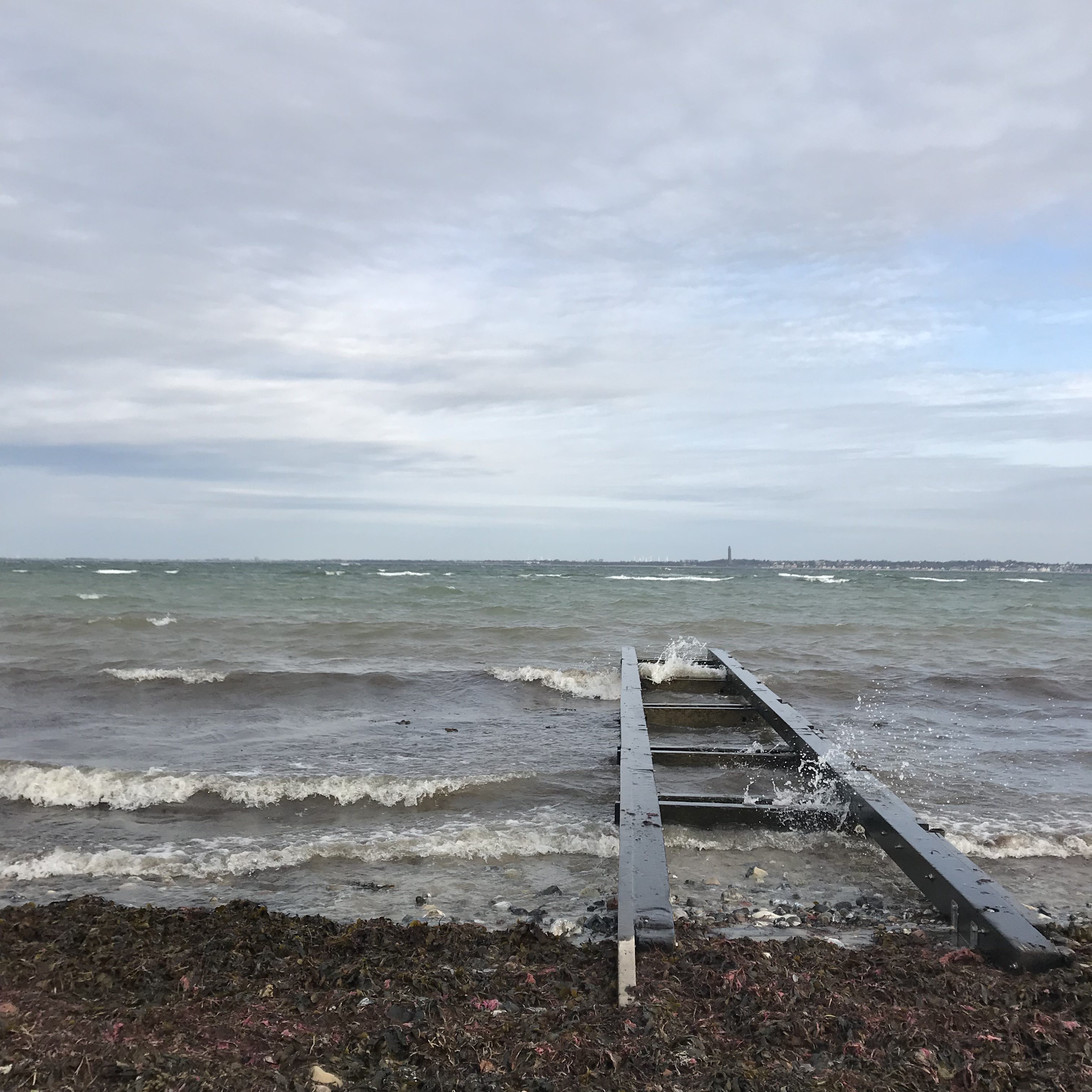
Funnily enough, the only reason I ended up on that beach was that I wanted to go watch a cruise ship go through the locks and into the Kiel canal with a friend. And, funnily enough, the ship decided to not go through the Kiel canal, as it did the week before. So we decided that we should go to the beach. Very good decision! :-)
But here is a “before” pic from when I was still thinking I would be writing a blog post about the ship going through the locks. Isn’t the seagull hilarious, posing like that?

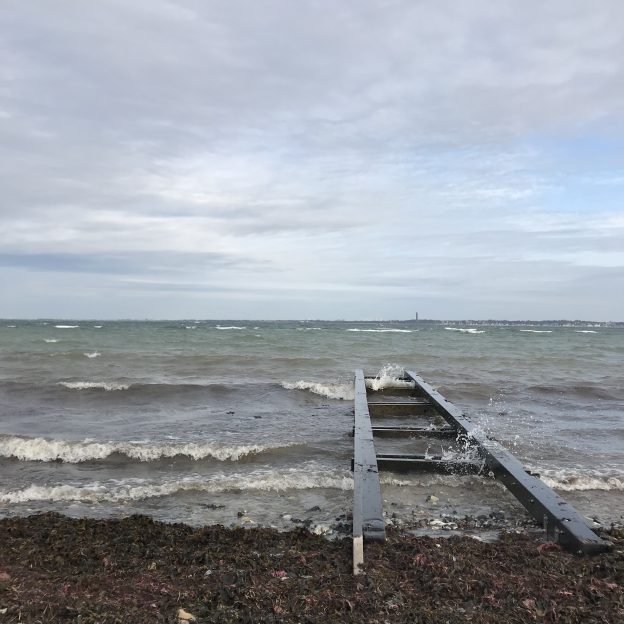
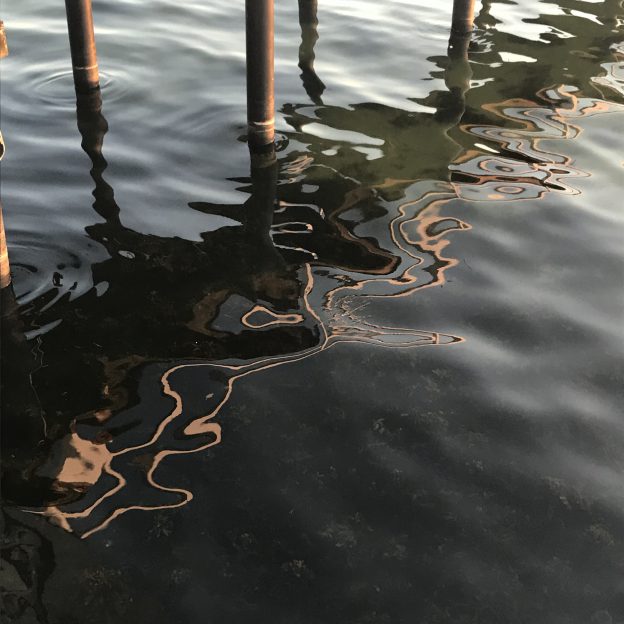
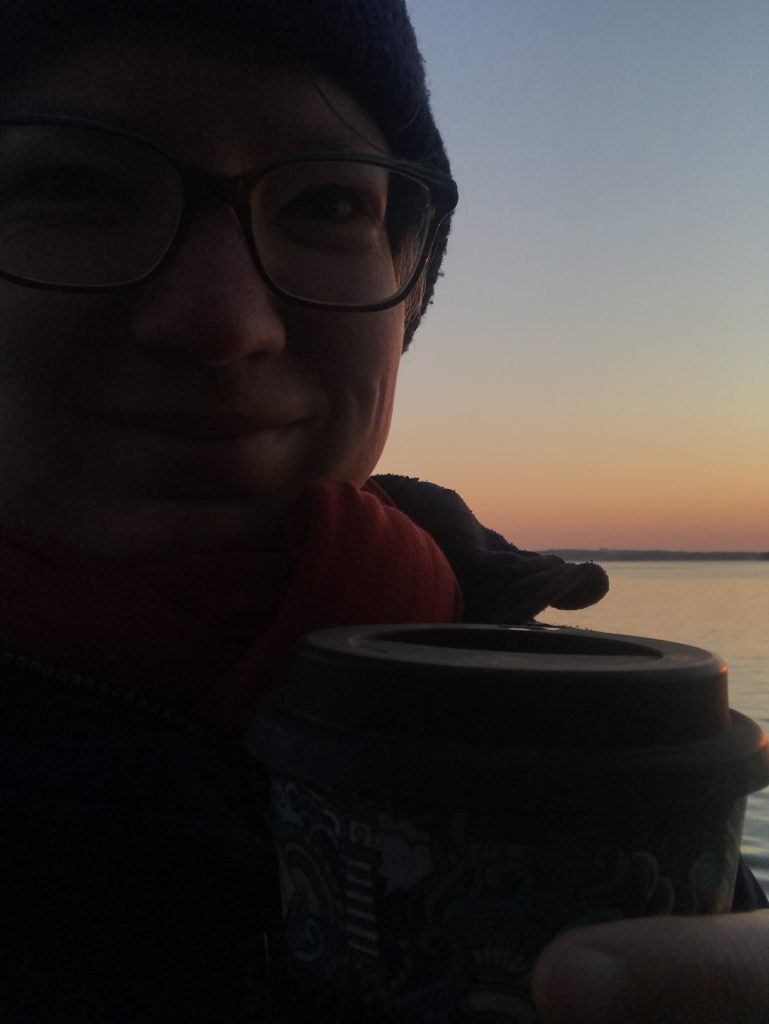
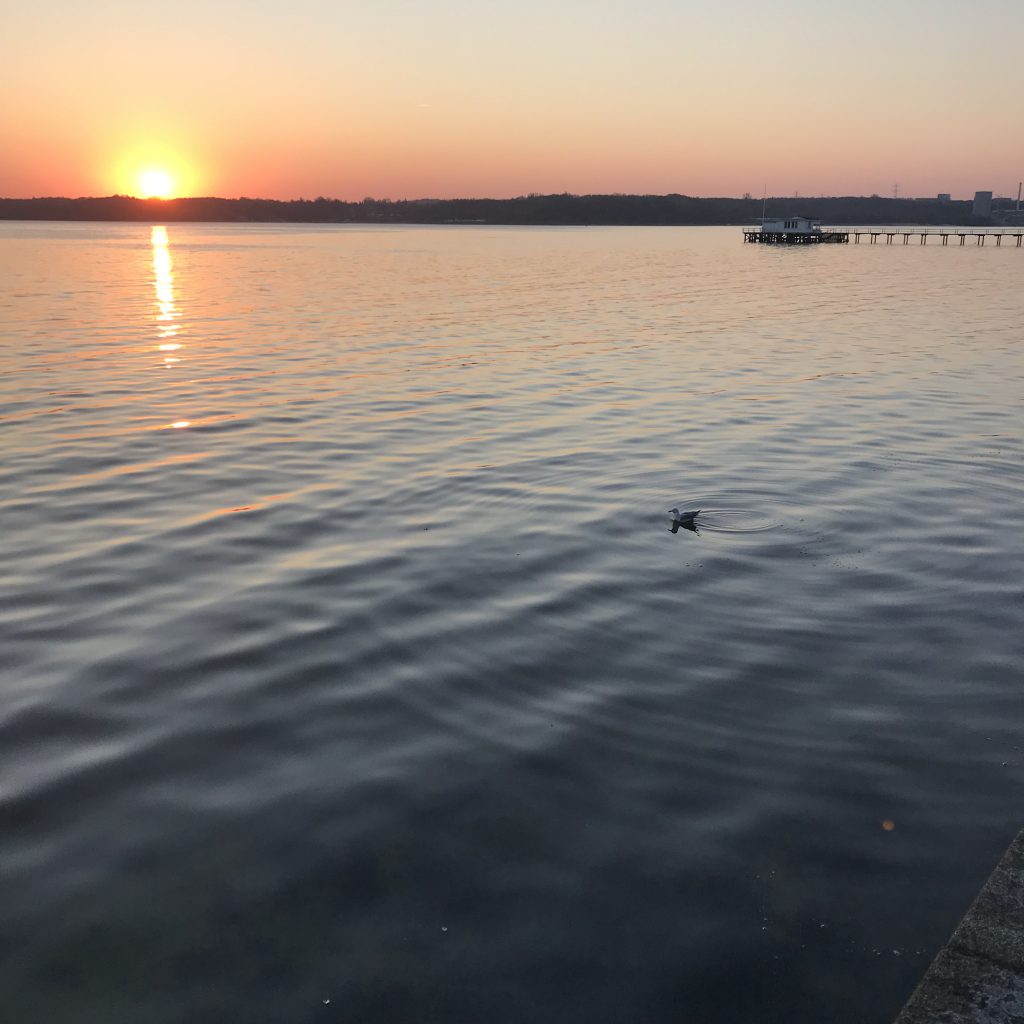

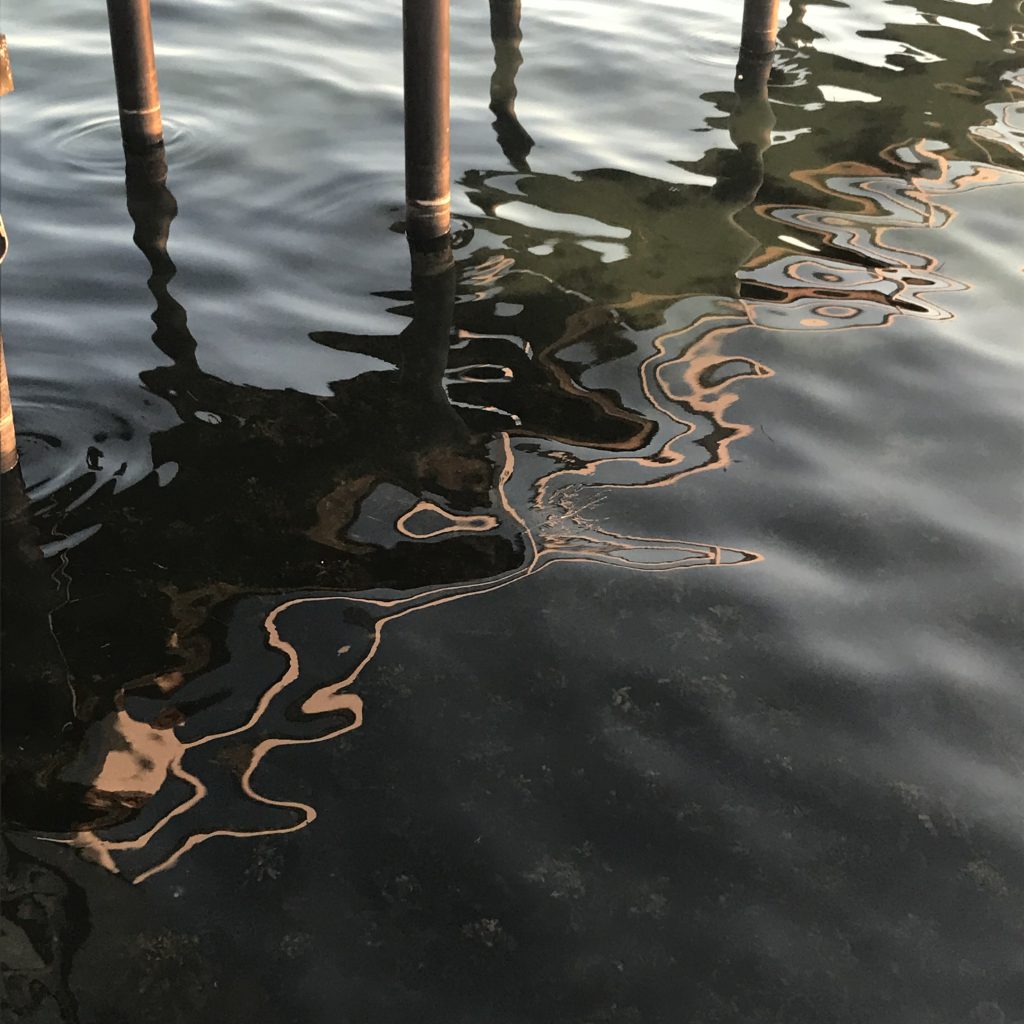
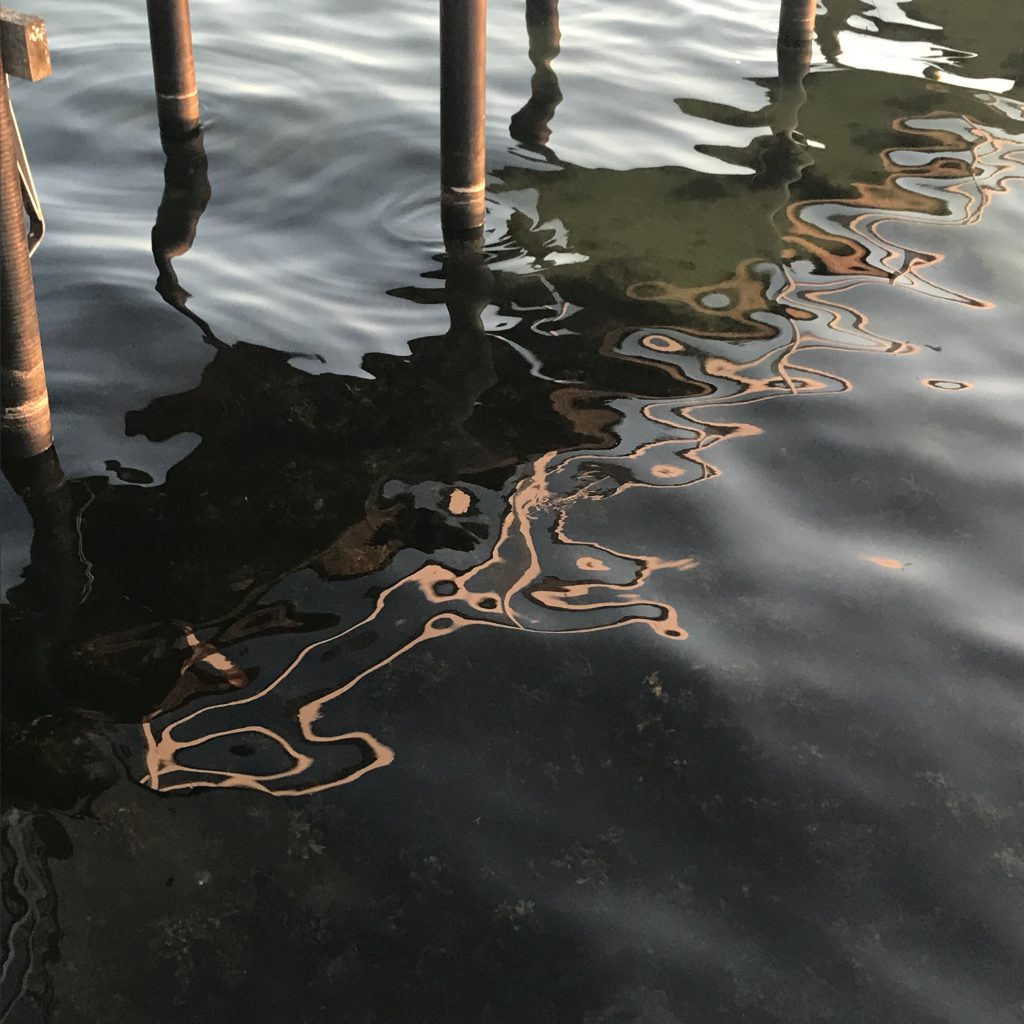 But anyway, time to start working. Have a great day everybody!
But anyway, time to start working. Have a great day everybody!